
March+April 2020 Visit us at itsyourmagazine.com



36 Real Estate Insights: 20 Questions to Ask When Buying a Condo, and AgentAssisted Homes Sell for More Than Homes Sold by Owners FAMILY BUILDERS 41 Family Chatter 42 That’s Good to Know! 44 Show Her You Care, Show Him You Care 45-46 Teach Your Kids Something New! 48 Snacks—Recipes for Tasty Get-togethers 50 Crafts—Get Creative with Your Kids 54 Book Reviews and Activities 55 57 Teen Talk Helpful Advice from One Teen to Another FAMILY FUN GUIDE 58 Get to know the people, places, and things that make your town special Seasonal | The Arts ���������������������������������������������������������� 58 Runs, Walks, & More | Sounds Fun ����������������������������� 59 Reoccurring Local | Volunteer 60 contents March+April 2020 INSIDE THIS ISSUE 5 Building Up STEAM 35 Easy Ideas to Try at Home 14 Cultural Spotlight: Holiday Traditions Around the World 16 The Walking Dead Parent: 9 Ways to Promptly Pay Off Your Sleep Debts 18 Secrets to Throwing an Epic Birthday That’s Easy on the Coffer 19 Civics Spotlight—We the Civics Kids The Bill of Rights 22 Special Needs Spotlight The ABCs of IEPs 28 Spring Has Sprung It’s Time for a Celebration 34 Non-Profit Spotlight The Pensacola Jets 5 18 Spark up some lively conversation with your kids. Take the FamilyChatter Challenge. 42
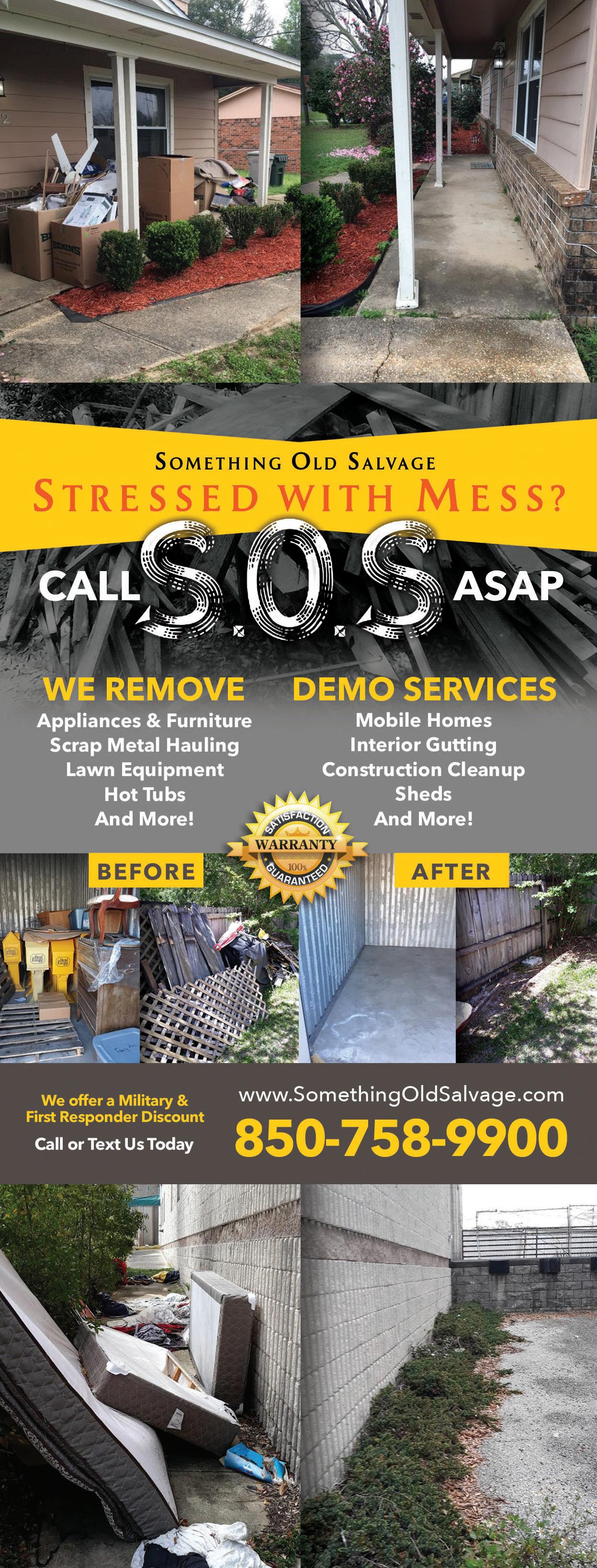

Editorial Director
Tasha Williams info@itsyourmagazine com
Subject Line: Editorial
Snacks & Crafts Coordinator
Carol Eide info@itsyourmagazine�com
Subject Line: Snacks and Crafts
Contributing Authors
Janeen Lewis
Cheryl Maguire
Diane Wiscarson Pam Molnar
Shannon Wade Henley Betsy Tait
Katy M� Clark
Sarah Lyons Fred Barnet
Suzanne Bratton info@itsyourmagazine�com
Subject Line: Calendar
Proofreader
Jennifer Cullis
Creative Director Rob Williams robwilliams@itsyourmagazine com Would
parent Emerald
Coast
Christina Katz
Events
Calendar of
and Resource Guide
In everything we do, we believe in inspiring families to live, laugh, love and enjoy life—TOGETHER!
Media
Publisher Nathan Wilson nathanwilson@itsyourmagazine com Phone: 503-710-1720 Social
Manager Lexy Cruz lexycruz@itsyourmagazine com
you like to write for Emerald Coast Parent? Please contact our editorial director with your request. A submission does not guarantee publication. We reserve the right to edit all submissions. © 2019 It’s Your Magazine. All rights reserved. Emerald Coast Parent content may not be used or reproduced or transmitted in any form or by any means, including photocopy, without the express written permission of the publisher. Emerald Coast Parent is not responsible for the loss of or damage to unsolicited manuscripts, unsolicited artwork or any other unsolicited material. Unsolicited material will not be returned. It’s Your Magazine and its affiliates, contributors, writers, editors, publisher and designers accept no responsibility for errors or omissions with information and/or advertisements contained herein. It’s Your Magazine’s liability in the event of an error is limited to a printed correction. It’s Your Magazine does not assume liability for products or services advertised herein and assumes no responsibility for claims made by the advertisers. 4 March+April 2020 EC Parent Magazine
BUILDING UP

35 Easy Ideas to Try at Home
By Janeen Lewis
STEAM (Science, Technology Engineering, Arts and Math) has grown in popularity in recent years as a way to educate children for the 21st century. STEAM programs have been adopted in many schools, and the future will include STEAM-related jobs. Foster a love of STEAM at home with these fun, active and easy ideas.
SCIENCE
Children are naturally inquisitive, and curiosity is the backbone of science discovery. Here are some easy ways to inspire kids to dive into science.
• Give children a scientific start. Use scientific words and make exploring a part of everyday life.
• Welcome questions such as “Why is the sky blue?” Questioning is the first step of the scientific method.
• Encourage household problem-solving. Bread dough that doesn’t rise, an inside door that sticks in winter, or an insect infestation in the garden are gateways to hypotheses, experiments, and answers.
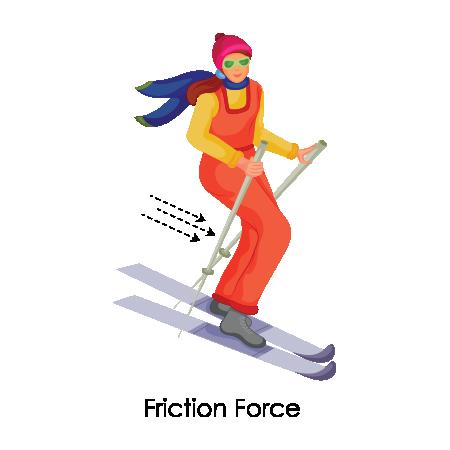
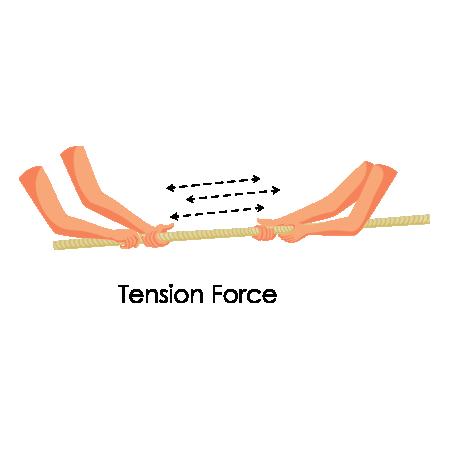
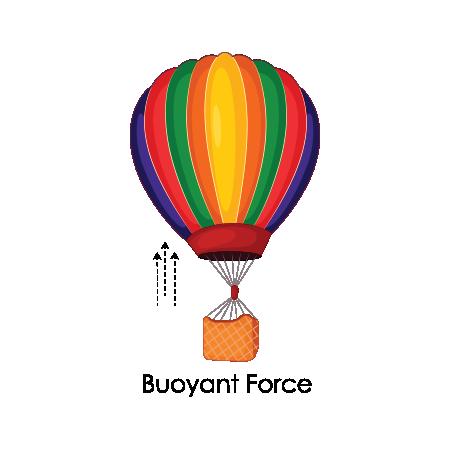






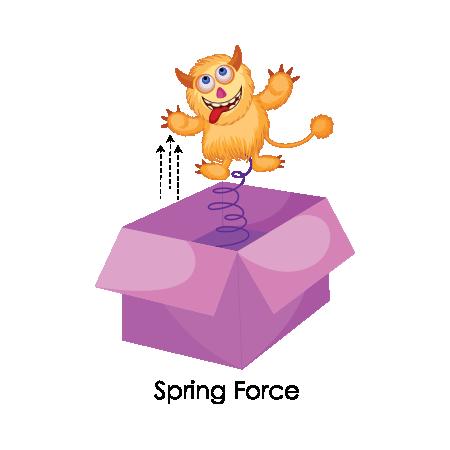
ItsYourMagazine com EC Parent Magazine March+April 2020 5
PHOTOSYNTHIESIS
• Create a kitchen science lab with common ingredients. Make homemade ice cream in a Ziploc bag, make butter out of heavy cream in a mason jar, or grow geodes in eggshells.
• Have a blast—literally! Many safe experiments involve things that erupt. Make a papier mâché baking soda and vinegar volcano. Go outside and drop a pack of Mentos in a 2-liter soda or launch a bottle rocket. Discuss the science behind the blast.
• Grow a garden. Start seedlings from kitchen vegetable seeds or trimmings.
• Relate science to hobbies. Learn the physics behind the fastball or discuss how a gymnast balances on a beam.
TECHNOLOGY
Most parents set screen-time boundaries. But kids love devices, and future jobs will require skills in technology. Embrace screen benefits that build technology skills.
• Make the computer your friend. Teach your child how to do research, make brochures for school projects, and use spreadsheets for chores and allowance. When you take a family trip, let your child research places to visit.
• Start coding early. Check out code.org for fun ways kids can code online or without technology. Other coding sites to try are Codeacademy, Kodable, Lightbot, Scratch, and Tynker.
Introduce Raspberry Pi. Kids can use this card-sized single-board computer for basic programming.








• Let them make a stop-motion video. Apps to try: Lego Movie Maker, Stop Motion Studio, Lapse It, iStopMotion, and Clayframes.
• Use digital tools to help with schoolwork. Try Dictionary. com, Thesaurus.com, and khanacademy.com. Explore study aid apps such as Tinycards, and use apps myHomework and My GradeBook.

Start coding early. Check out code.org for fun ways kids can code online or without technology. Other coding sites to try are Codeacademy, Kodable, Lightbot, Scratch, and Tynker.

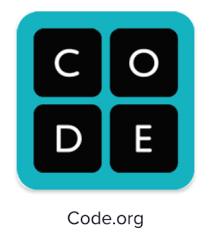

LIVE ACTION VIDEO
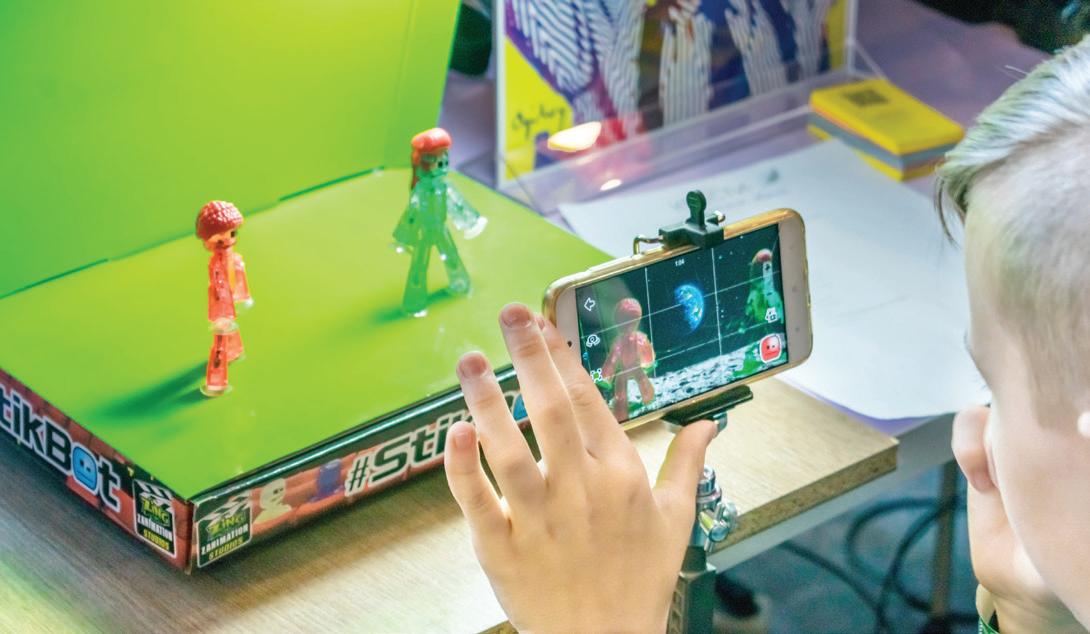
ENGINEERING
Does your child love Lego blocks or Minecraft? Does she want to take apart the toaster or fix the cell phone when it breaks? Here are some ways to encourage a budding engineer.
• Teach kids the Engineering Design Process. Check out a kid-friendly version at teachengineering.com.
• Let them join a Lego robotics club.
• Keep building supplies on hand. Try Legos, wooden blocks, K’nex, Lincoln Logs, Tinker Toys, and Duplo bricks. Also keep recyclables like cardboard, paper towel tubes, and cereal boxes. There are even edible options like cheese, grapes, and marshmallows. Pair one of these with toothpicks or pretzels for building.
• Encourage children to complete tower-building challenges. One fun and easy way to do this is with notecards or old playing cards and no other materials. Kids can only fold the cards—no ripping or cutting.
CODING
Continued on page 8
ItsYourMagazine com EC Parent Magazine March+April 2020 7

• Create catapults. Some materials to try: popsicle sticks, spoons, drink lids, rubber bands, and pom poms.
• Build a Rube Goldberg Machine™ out of household materials. This machine is intentionally designed to perform a simple task through a series of complex chain reactions. To learn more, visit rubegoldberg.com.
• Join a radio control club. Planes, helicopters, and boats often inspire children. Building their own involves creativity and problem-solving skills.
• Build a miniature roller coaster. Give your child materials such as pipe insulation, marbles, cups, and duct tape. Watch them take their creativity for a ride.




CREATE CATAPULTS. SOME MATERIALS TO TRY: POPSICLE STICKS, SPOONS, DRINK LIDS, RUBBER BANDS, AND POM POMS
MACHINES INTENTIONALLY DESIGNED TO PERFORM SIMPLE TASKS THROUGH A SERIES OF COMPLEX CHAIN REACTIONS.
Learn more about Rube and the Rube Goldberg Machine Contest. ® rubegoldberg.com

8 March+April 2020 • EC Parent Magazine ItsYourMagazine com Artwork Copyright © and TM or ® marks as All Rights Reserved RUBE GOLDBERG ® is a registered trademark of Rube Goldberg Inc All materials used with permission rubegoldberg com
Continued on page 10
FIRST® LEGO® League is the most accessible, guided, global robotics competition, helping students and teachers to build a better future together. The program is built around theme-based challenges to engage children aged 9 to 16 in research, problem solving, coding, and engineering. The foundation of the program is the FIRST® Core Values, which emphasize teamwork, discovery, and innovation. Students emerge more confident, excited, and equipped with the skills they need in a changing workforce.
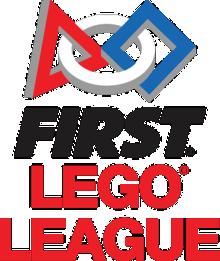
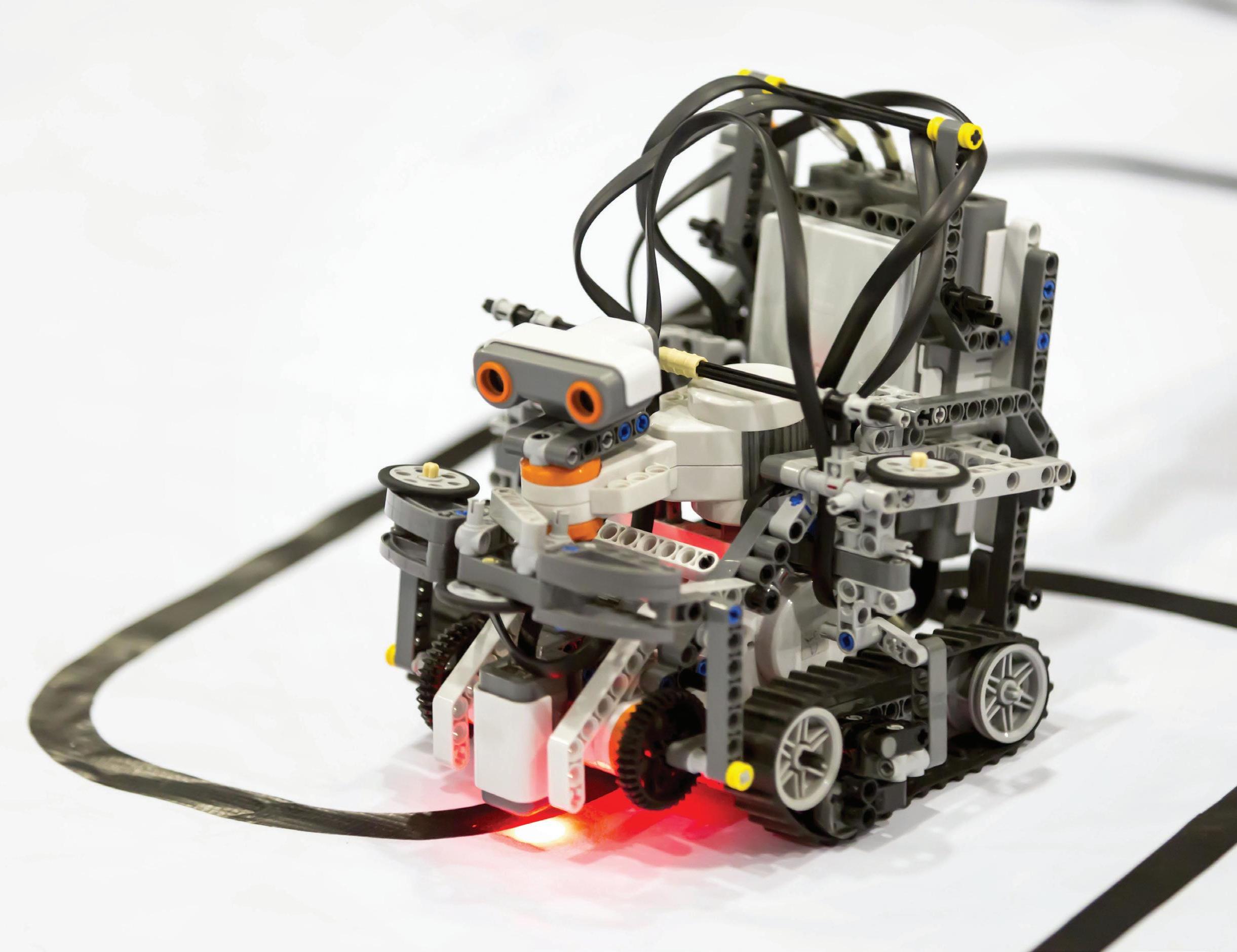
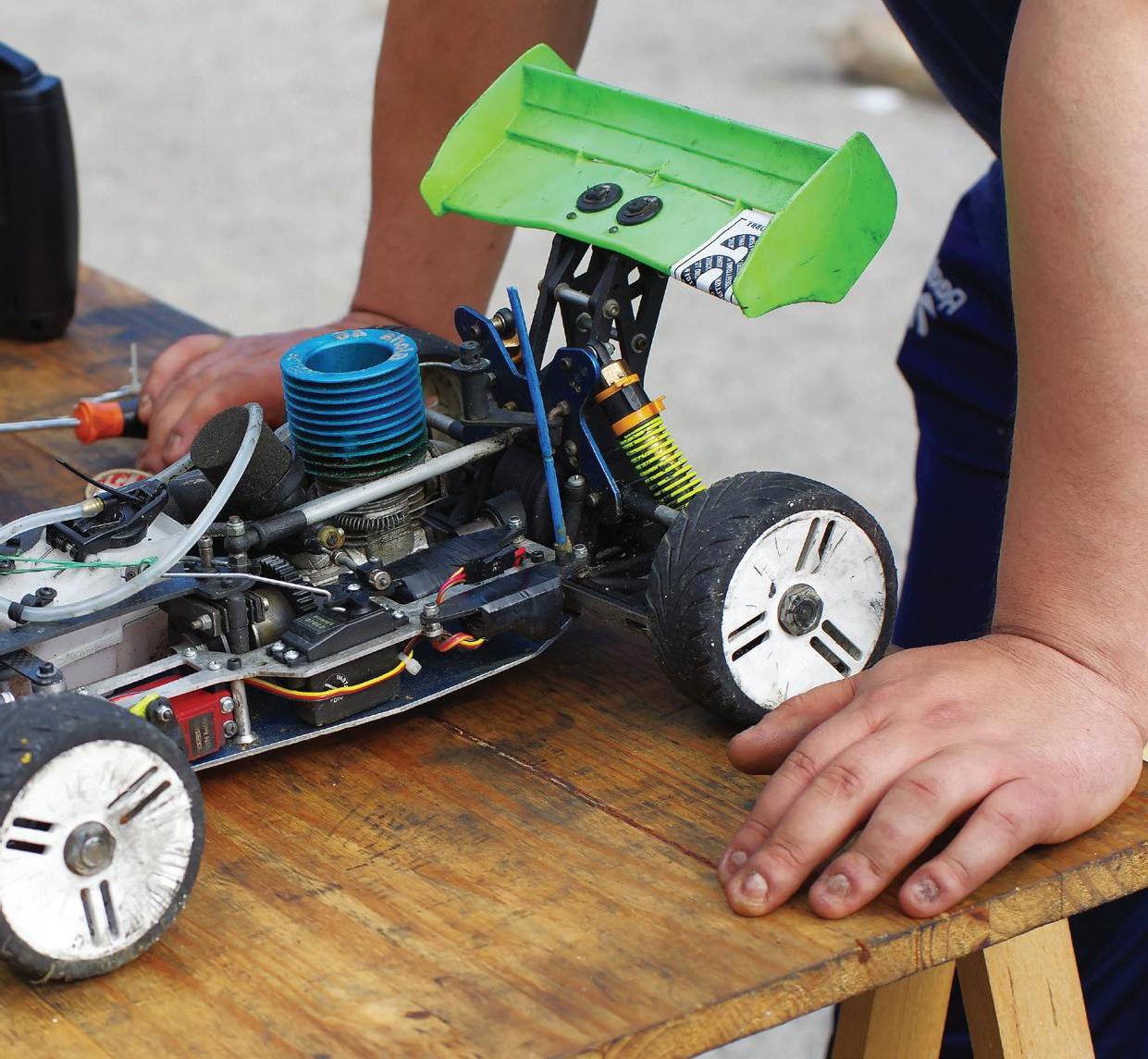
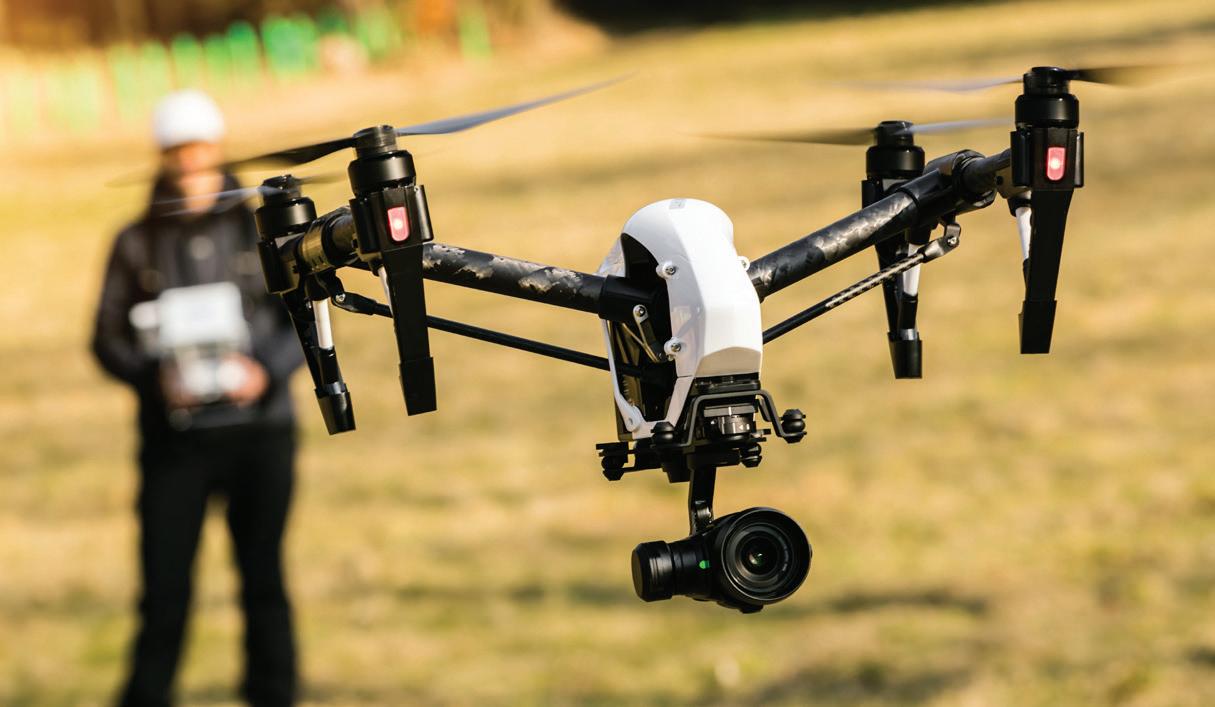
CHILDREN OF ALL AGES ENJOY BUILDING AND PLAYING WITH RADIO-CONTROLLED CARS, PLANES, HELICOPTERS, BOATS, AND MORE!
ItsYourMagazine com EC Parent Magazine March+April 2020 9
ARTS
Children can be artists by painting, drawing, sculpting, singing, playing an instrument, dancing, or writing. Take note of inclinations in these areas and foster a love of the arts.
• Inspire creativity. Immerse your home in different types of art. Listen to music, collect art or art books, or check them out from the library.
• Be positive. Even if you don’t think you’re good at art, try some art mediums along with your child. He or she will be more willing to try too.
• Stock up on art supplies. Water colors, finger paints, crayons, colored pencils, pastels, construction paper, sketch books, and origami paper are some examples.
• Experiment with evaporation art. Mix salt with water and paint. Have your child predict what will happen to the salt and water.
• Borrow a how-to-draw book from the library. Step-by-step directions will give your child more confidence.
• Sculpt with air-dry clay. Your child doesn’t need a pottery wheel to create with clay. After the clay dries, it can be painted.
• Listen to a variety of music genres. This will open your child’s mind to different artists and styles of music.
• Sign your child up for a creative-writing class.
• Read poetry books.
MATH
There are many ways to make math relevant and interesting. Research shows that most children can succeed at math.
• Teach number sense. Mentally work through problem-solving logic with your child. Bedtime Math: A Fun Excuse to Stay Up Late by Laura Overdeck is good for promoting math discussions.
• Check out Texas Instruments’ “STEM Behind Cool Careers” (https://education.ti.com/en/activities/stem/gen-stem) for videos connecting algebra, geometry, and physics to jobs like fashion design, flying jets, and more.
• Cook or bake together. Measuring, equivalent fractions, and conversions are all part of recipe building.
• Try grocery-store math. Have kids weigh enough produce without going over a dollar amount, compare prices for the best buys, and stay within a weekly budget.
• Measure the miles. When going on family outings, find the distance with your child. Calculate the miles and time it will take to get there and how much the gas will cost.
• Assign chores and give an allowance. They’ll be asking for ice cream and movie money anyway, so why not teach practical budgeting skills in the process? v
Janeen Lewis is a writer, teacher, and mom to Andrew and Gracie. She has been published in several parenting publications across the country.




TURN YOUR PHYSICS LESSONS ON STATES OF MATTER AND PHASE CHANGE INTO AN ICE CREAM SOCIAL WITH THIS ACTIVITY FROM STEM Behind Cool Careers.

Continued from page 8
SPORT WHERE EVERY KID CAN TURN PRO
ARE YOU READY TO CHANGE THE WORLD?
Anyone can be a part of this movement...
Join or start a team in your area.
A progressive series of mentor-guided, team-based robotics challenges for students aged 6-18, FIRST® is designed to ignite curiosity and encourage exploration. A diverse community of adult coaches, mentors, educators, volunteers, sponsors, and alumni help guide, inspire, and support students as they learn.
We are
Bring the FIRST experience to a classroom, school, or school district.
Sponsor a team, event, or local FIRST program.
world’s leading youth-serving nonprofit helping young people discover a passion for STEM and develop the skills they’ll need to succeed in today’s competitive workforce.
Become a team mentor or coach.
Volunteer at a local event.
Donate to support the mission. Visit firstinspires.org to learn more.
It was really empowering that I had a group of friends and mentors who were patient with me, and willing to show me how to build. I think I had been really intimidated by engineering, up until that point.
It was really empowering that I had a group of friends and mentors who were patient with me, and willing to show me how to build. I think I had been really intimidated by engineering, up until that point.
-Cassie Hudson, FIRST alum + applications engineer
-Cassie Hudson, FIRST alum + applications engineer
-Rhodes Conover, FIRST alum + engineering student
-Rhodes Conover, FIRST alum + engineering student
200 Bedford Street Manchester, NH 03101 USA
personal growth. Other high school experiences simply do not match up.
, the FIRST® logo, FIRST® Robotics Competition, and FIRST® Tech Challenge are trademarks of For Inspiration and Recognition of Science and Technology (FIRST). LEGO® and MINDSTORMS® are registered trademarks of the LEGO Group. FIRST® LEGO® League and LEGO® League Jr. are jointly held trademarks of FIRST and the LEGO Group. ©2019 All rights reserved. FI065 firstinspires.org
personal growth. Other high school experiences simply do not match up.
future success — not just about engineering, but about life: about leadership, friendship, and
Inclusion,
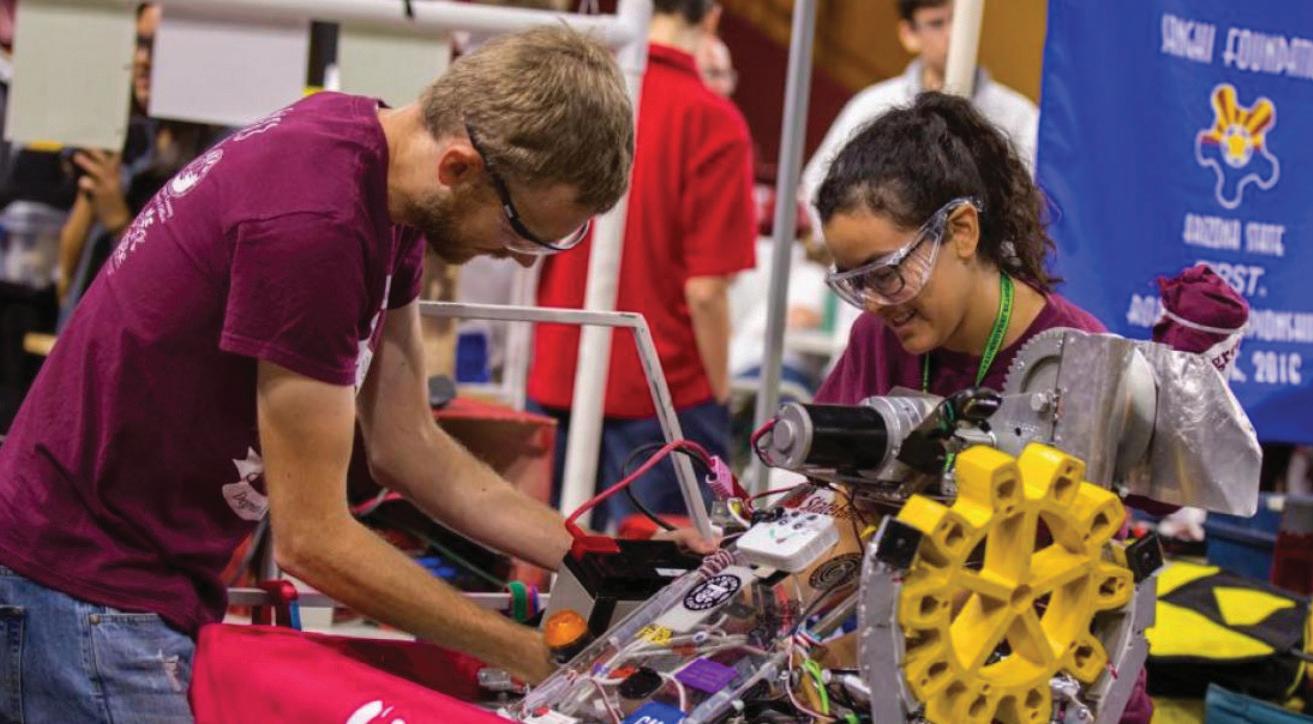
FIRST taught me things that were crucial to my
FIRST taught me things that were crucial to my future success — not just about engineering, but about life: about leadership, friendship, and
ARE YOU READY TO CHANGE THE WORLD?
Fun: We enjoy and celebrate what we do!
Fun: We enjoy and celebrate what we do!
Teamwork: We are stronger when we work together.
Anyone can be a part of this movement...
Teamwork: We are stronger when we work together.
Inclusion: We respect each other and embrace our differences.
Join or start a team in your area.
Inclusion: We respect each other and embrace our differences.
Impact: We apply what we’ve learned to improve our world.
Bring the FIRST experience to a classroom, school, or school district.

ways to all types of career choices and outcomes.
Impact: We apply what we’ve learned to improve our world.
More than a decade of verifiable data from Brandeis University (including a rigorous five-year longitudinal study) supports we already knew: FIRST helps students develop both selfconfidence and valuable, real-world skills that can open path ways to all types of career choices and outcomes. FIRST programs encourage students to pursue education and careers in STEM-related fields, but they also inspire kids to become leaders and innovators in any industry.
Innovation: We use creativity and persistence to solve problems.
Sponsor a team, event, or local FIRST program. Become a team mentor or coach.
Innovation: We use creativity and persistence to solve problems.
Discovery: We explore new skills and ideas.
Volunteer at a local event.
Discovery: We explore new skills and ideas.
FIRST Core Values emphasize friendly sportsmanship, respect for the contributions of others, teamwork, learning, and community involvement:
Donate to support the mission. Visit firstinspires.org to learn more.
FIRST Core Values emphasize friendly sportsmanship, respect for the contributions of others, teamwork, learning, and community involvement:
BUILDING GLOBAL CITIZENS
FIRST IS
BUILDING GLOBAL CITIZENS
We are the world’s leading youth-serving nonprofit helping young people discover a passion for STEM and develop the skills they’ll need to succeed in today’s competitive workforce. FIRST COMMITTED A DIVERSE, EQUITABLE In
BUILT BETTER TOGETHER
More than a decade of verifiable data from Brandeis University (including a rigorous five-year longitudinal study) supports what confidence and valuable, real-world skills that can open path
More than a decade of verifiable data from Brandeis University (including a rigorous five-year longitudinal study) supports what ways to all types of career choices and outcomes.
FIRST programs encourage students to pursue education and Kamen founded
FIRST programs encourage students to pursue education and careers in STEM-related fields, but they also inspire kids to Kamen founded vision: transformation. STEM is culture people can becoming fields of technology. FIRST IS

vision: transformation. STEM is culture people can becoming fields of technology.
FIRST®, the FIRST Tech Challenge trademarks of For Inspiration and Recognition of Science and Technology (FIRST). LEGO MINDSTORMS League KID CAN mentor-guided, team-based robotics FIRST A diverse community of volunteers, sponsors, and support students as they learn. youth-serving nonprofit helping STEM and develop the competitive workforce. that I had a group of were patient with me, to build. I think I by engineering, up Donate to support the mission. Visit firstinspires.org to learn more. Tech Challenge are and League and League Jr. are jointly held trademarks of FIRST and the LEGO Group. ©2019 they learn. nonprofit helping develop the workforce. ways to all types of career choices and outcomes. FIRST programs encourage students to pursue education and careers in STEM-related fields, but they also inspire kids to become leaders and innovators in any industry. In 1989, inventor Dean Kamen founded FIRST® with an ambitious vision: A global transformation. A world where STEM is celebrated. And a culture where young people can proudly dream of becoming true leaders in the fields of science and technology.
IS BUILDING Core respect for and community Discovery: Innovation: solve problems. We Inclusion: Teamwork: We enjoy FIRST future but about personal simply -Rhodes group of with me, think I engineering, up engineer COMBINING THE EXCITEMENT OF SPORT WITH THE RIGORS OF SCIENCE AND TECHNOLOGY
THE INSPIRATION OF COMMUNITY FIRST®, the FIRST® logo, FIRST® Robotics Competition, and FIRST® Tech Challenge are trademarks of For Inspiration and Recognition of Science and Technology (FIRST). LEGO® and MINDSTORMS® are registered trademarks of the LEGO Group. FIRST® LEGO® League and FIRST® LEGO League Jr. are jointly held tradmarks of FIRST and the LEGO Group. ©2019 FIRST. All rights reserved. FIRST ® IS THE ONLY SPORT WHERE EVERY KID CAN TURN PRO A progressive series of mentor-guided,
alumni help guide, inspire,
support
INSPIRES
AND
team-based robotics challenges for students aged 6-18, FIRST® is designed to ignite curiosity and encourage exploration. A diverse community of adult coaches, mentors, educators, volunteers, sponsors, and
and
students as they learn.
FIRST COMMITTED A DIVERSE, EQUITABLE In today’s success confidence It fosters and builds achieve At FIRST students developing access For more
the
-
COMBINING
COMMUNITY
STEM solve FIRST ® IS THE
EXCITEMENT WITH SCIENCE AND
ARE YOU READY TO would was overall player
ONLY
today’s success confidence It fosters and builds achieve At FIRST students developing access
more Inclusion,
For
COMBINING
AND COMMUNITY
was overall player STEM solve
EXCITEMENT WITH SCIENCE
would
INSPIRES COMBINING THE EXCITEMENT OF SPORT
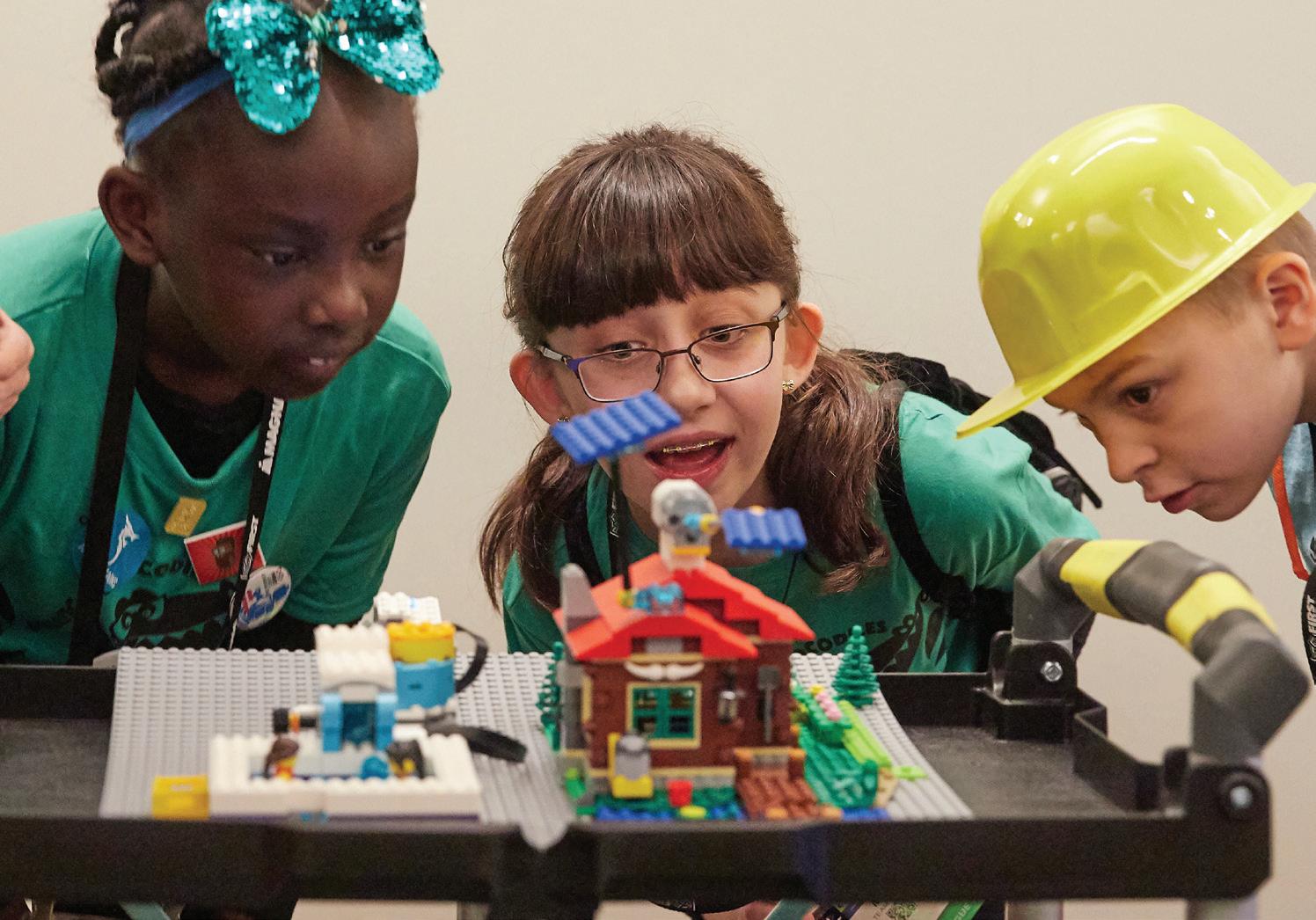

AGES 6-10
AGES 6-10
AGES 6-10
It’s never too early to discover STEM
It’s never too early to discover STEM
AGES 6-10
It’s never too early to discover STEM
It’s
It’s never too early to discover STEM
AGES
6-10
never too early to discover STEM
THE CHALLENGE:
THE CHALLENGE:
THE CHALLENGE:
THE CHALLENGE:
AGES 9-16
AGES 9-16
AGES 9-16
Young innovators using skills and imagination to solve problems as a team
AGES
9-16
Young innovators using skills and imagination to solve problems as a team
AGES 9-16
Young innovators using skills and imagination to solve problems as a team
Young innovators using skills and imagination to solve problems as a team
Young innovators using skills and imagination to solve problems as a team
THE CHALLENGE:
THE CHALLENGE:
AGES 12-18
It’s way more than
building robots
Teams of children explore scientific concepts through a real-world theme. Kids then work together to build a model and, with LEGO® Education WeDo 2.0, code it to make it move.
THE CHALLENGE:
THE CHALLENGE:
Teams of children explore scientific concepts through a real-world theme. Kids then work together to build a model and, with LEGO® Education WeDo 2.0, code it to make it move.
Teams of children explore scientific concepts through a real-world theme. Kids then work together to build a model and, with LEGO® Education WeDo 2.0, code it to make it move.
Teams of children explore scientific concepts through a real-world theme. Kids then work together to build a model and, with LEGO® Education WeDo 2.0, code it to make it move.
Teams of children explore scientific concepts through a real-world theme. Kids then work together to build a model and, with LEGO® Education WeDo 2.0, code it to make it move.
THE JOURNEY:
THE JOURNEY:
THE JOURNEY:
THE JOURNEY:
Each team documents its work in an Engineering Notebook and creates a Show Me poster to chronicle its research journey. In a season-culminating Expo, teams celebrate what they’ve learned and created together.
THE JOURNEY:
THE CHALLENGE:
THE CHALLENGE:
Teams collaborate to design, build, code, and test LEGO® MINDSTORMS® robots for autonomous missions on a themed, table-top playing field. Each team works together to solve a real-world problem.
Teams collaborate to design, build, code, and test LEGO® MINDSTORMS® robots for autonomous missions on a themed, table-top playing field. Each team works together to solve a real-world problem.
Teams collaborate to design, build, code, and test LEGO® MINDSTORMS® robots for autonomous missions on a themed, table-top playing field. Each team works together to solve a real-world problem.
THE CHALLENGE:
Teams collaborate to design, build, code, and test LEGO® MINDSTORMS® robots for autonomous missions on a themed, table-top playing field. Each team works together to solve a real-world problem.
Guided by adult coaches and mentors, of students design, build, code, and operate smartphone-controlled robots to compete alliance format. Students are encouraged team brands and reach out to their communities.
Teams collaborate to design, build, code, and test LEGO® MINDSTORMS® robots for autonomous missions on a themed, table-top playing field. Each team works together to solve a real-world problem.
THE JOURNEY:
Each team documents its work in an Engineering Notebook and creates a Show Me poster to chronicle its research journey. In a season-culminating Expo, teams celebrate what they’ve learned and created together.
Each season culminates in a series of regional tournaments and championships, where teams compete with their robots and share what they’ve learned and invented.
Each team documents its work in an Engineering Notebook and creates a Show Me poster to chronicle its research journey. In a season-culminating Expo, teams celebrate what they’ve learned and created together.
Each team documents its work in an Engineering Notebook and creates a Show Me poster to chronicle its research journey. In a season-culminating Expo, teams celebrate what they’ve learned and created together.
THE OUTCOME:
Each team documents its work in an Engineering Notebook and creates a Show Me poster to chronicle its research journey. In a season-culminating Expo, teams celebrate what they’ve learned and created together.
THE OUTCOME:
Through their own research, critical thinking, and imagination, young children develop an early interest in STEM, learn to work together as a team to achieve a common goal, and have a ton of fun.
Through their own research, critical thinking, and imagination, young children develop an early interest in STEM, learn to work together as a team to achieve a common goal, and have a ton of fun.
THE OUTCOME:
THE OUTCOME:
THE OUTCOME:
Through their own research, critical thinking, and imagination, young children develop an early interest in STEM, learn to work together as a team to achieve a common goal, and have a ton of fun.
Through their own research, critical thinking, and imagination, young children develop an early interest in STEM, learn to work together as a team to achieve a common goal, and have a ton of fun.
Through their own research, critical thinking, and imagination, young children develop an early interest in STEM, learn to work together as a team to achieve a common goal, and have a ton of fun.
THE JOURNEY:
Each season culminates in a series of regional tournaments and championships, where teams compete with their robots and share what they’ve learned and invented.
THE JOURNEY:
THE JOURNEY:
THE JOURNEY:
Each season culminates in a series of regional tournaments and championships, where teams compete with their robots and share what they’ve learned and invented.
THE OUTCOME:
THE OUTCOME:
THE JOURNEY: Teams compete at local and regional events, up to the FIRST Championship. They earn based on their teamwork, creativity, innovation, the engineering design process.
Each season culminates in a series of regional tournaments and championships, where teams compete with their robots and share what they’ve learned and invented.
Using STEM concepts, students overcome the same challenges that face scientists today. They develop critical-thinking and presentation skills, build selfconfidence in STEM, and have fun while working as part of a team.
Each season culminates in a series of regional tournaments and championships, where teams compete with their robots and share what they’ve learned and invented.
THE OUTCOME:
Using STEM concepts, students overcome the same challenges that face scientists today. They develop critical-thinking and presentation skills, build selfconfidence in STEM, and have fun while working as part of a team.
THE OUTCOME:
THE OUTCOME:
THE OUTCOME:
Using STEM concepts, students overcome the same challenges that face scientists today. They develop critical-thinking and presentation skills, build selfconfidence in STEM, and have fun while working as part of a team.
Using STEM concepts, students overcome the same challenges that face scientists today. They develop critical-thinking and presentation skills, build selfconfidence in STEM, and have fun while working as part of a team.
Using STEM concepts, students overcome the same challenges that face scientists today. They develop critical-thinking and presentation skills, build selfconfidence in STEM, and have fun while working as part of a team.
universities,
While developing their STEM skills and basic engineering principles, students value of persistence, innovation, and teamwork. High school students are eligible to apply than $80 million in scholarships from colleges, universities, and technical programs.
Guided by of students smartphone-controlled alliance team Teams compete up to the based on the engineering
While developing basic engineering value of High school than $80

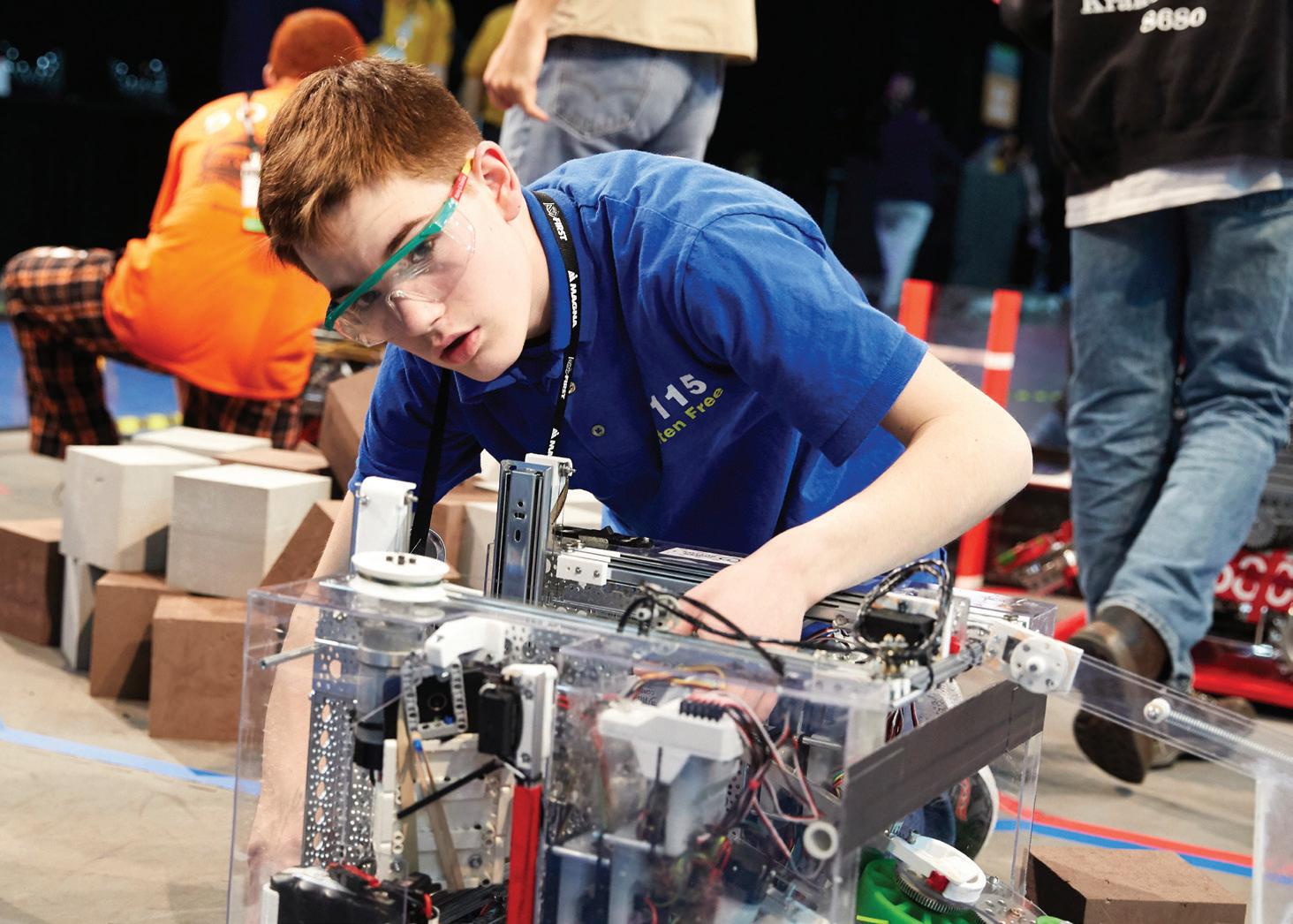
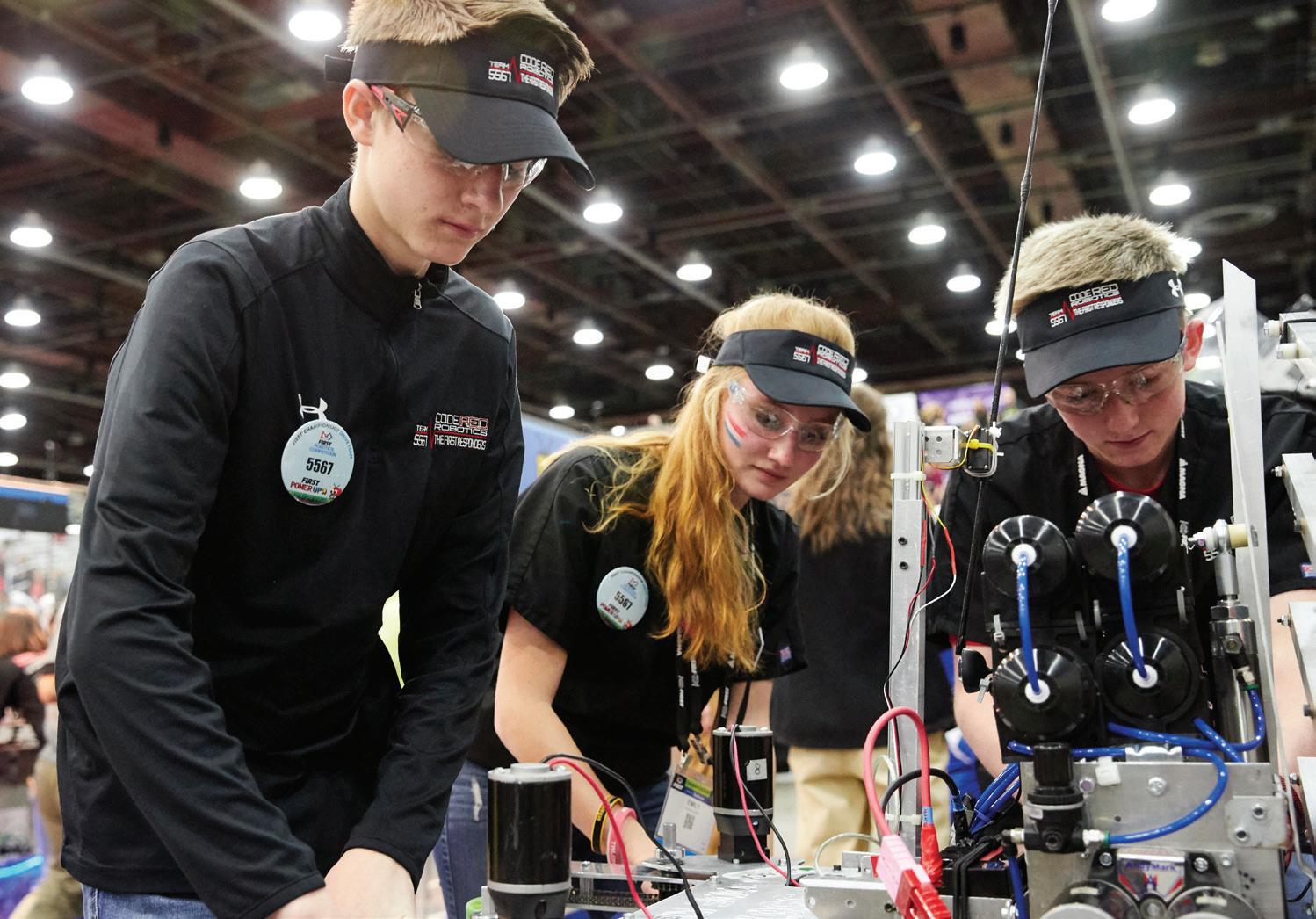
AGES 12-18
AGES 12-18
AGES 12-18
It’s way more than building robots
AGES 9-16
It’s way more than building robots
innovators using and imagination to problems as a team
AGES
12-18
It’s way more than building robots
AGES 12-18
It’s way more than building robots
THE CHALLENGE:
THE CHALLENGE:
THE CHALLENGE:
AGES 14-18
AGES 14-18
AGES 14-18
An exciting sport built around the world of STEM
An exciting sport built around the world of STEM
AGES 14-18
An exciting sport built around the world of STEM
AGES 14-18
An exciting sport built around the world of STEM
An exciting sport built around the world of STEM
THE CHALLENGE:
THE CHALLENGE:
THE CHALLENGE:
THE CHALLENGE:
THE CHALLENGE:
THE CHALLENGE:
test autonomous Each problem.
THE CHALLENGE: collaborate to design, build, code, and test MINDSTORMS® robots for autonomous themed, table-top playing field. Each together to solve a real-world problem.
Guided by adult coaches and mentors, small teams of students design, build, code, and operate Android smartphone-controlled robots to compete in an alliance format. Students are encouraged to create team brands and reach out to their communities.
Guided by adult coaches and mentors, small teams of students design, build, code, and operate Android smartphone-controlled robots to compete in an alliance format. Students are encouraged to create team brands and reach out to their communities.
Guided by adult coaches and mentors, small teams of students design, build, code, and operate Android smartphone-controlled robots to compete in an alliance format. Students are encouraged to create team brands and reach out to their communities.
Guided by adult coaches and mentors, small teams of students design, build, code, and operate Android smartphone-controlled robots to compete in an alliance format. Students are encouraged to create team brands and reach out to their communities.
Guided by adult coaches and mentors, small teams of students design, build, code, and operate Android smartphone-controlled robots to compete in an alliance format. Students are encouraged to create team brands and reach out to their communities.
THE JOURNEY: culminates in a series of regional and championships, where teams their robots and share what they’ve invented.
THE JOURNEY:
THE CHALLENGE:
Under strict rules, with limited time and resources, high school teams use sophisticated technology to build and code industrial-size robots for a challenging field game. Each team develops a brand, raises funds to meet its goals, and works to promote STEM in the local community.
Under strict rules, with limited time and resources, high school teams use sophisticated technology to build and code industrial-size robots for a challenging field game. Each team develops a brand, raises funds to meet its goals, and works to promote STEM in the local community.
Under strict rules, with limited time and resources, high school teams use sophisticated technology to build and code industrial-size robots for a challenging field game. Each team develops a brand, raises funds to meet its goals, and works to promote STEM in the local community.
Under strict rules, with limited time and resources, high school teams use sophisticated technology to build and code industrial-size robots for a challenging field game. Each team develops a brand, raises funds to meet its goals, and works to promote STEM in the local community.
THE JOURNEY:
Under strict rules, with limited time and resources, high school teams use sophisticated technology to build and code industrial-size robots for a challenging field game. Each team develops a brand, raises funds to meet its goals, and works to promote STEM in the local community.
THE JOURNEY:
regional teams they’ve the same develop selfworking as
Teams compete at local and regional events, building up to the FIRST Championship. They earn awards based on their teamwork, creativity, innovation, and the engineering design process.
THE JOURNEY:
THE JOURNEY:
THE JOURNEY:
Teams compete at local and regional events, building up to the FIRST Championship. They earn awards based on their teamwork, creativity, innovation, and the engineering design process.
THE OUTCOME: concepts, students overcome the same face scientists today. They develop and presentation skills, build selfSTEM, and have fun while working as
THE JOURNEY: Teams compete at local and regional events, building up to the FIRST Championship. They earn awards based on their teamwork, creativity, innovation, and the engineering design process.
At district and regional events, cheering crowds root for qualifying teams as students compete with their robots for prestigious awards and a coveted spot at the FIRST Championship.
THE JOURNEY:
THE JOURNEY:
At district and regional events, cheering crowds root for qualifying teams as students compete with their robots for prestigious awards and a coveted spot at the FIRST Championship.
THE JOURNEY:
Teams compete at local and regional events, building up to the FIRST Championship. They earn awards based on their teamwork, creativity, innovation, and the engineering design process.
THE OUTCOME:
Teams compete at local and regional events, building up to the FIRST Championship. They earn awards based on their teamwork, creativity, innovation, and the engineering design process.
THE OUTCOME:
While developing their STEM skills and mastering basic engineering principles, students learn the value of persistence, innovation, and teamwork. High school students are eligible to apply for more than $80 million in scholarships from colleges, universities, and technical programs.
THE OUTCOME:
While developing their STEM skills and mastering basic engineering principles, students learn the value of persistence, innovation, and teamwork. High school students are eligible to apply for more than $80 million in scholarships from colleges, universities, and technical programs.
THE OUTCOME:
THE OUTCOME:
While developing their STEM skills and mastering basic engineering principles, students learn the value of persistence, innovation, and teamwork. High school students are eligible to apply for more than $80 million in scholarships from colleges, universities, and technical programs.
While developing their STEM skills and mastering basic engineering principles, students learn the value of persistence, innovation, and teamwork. High school students are eligible to apply for more than $80 million in scholarships from colleges, universities, and technical programs.
While developing their STEM skills and mastering basic engineering principles, students learn the value of persistence, innovation, and teamwork. High school students are eligible to apply for more than $80 million in scholarships from colleges, universities, and technical programs.
At district and regional events, cheering crowds root for qualifying teams as students compete with their robots for prestigious awards and a coveted spot at the FIRST Championship.
THE OUTCOME:
At district and regional events, cheering crowds root for qualifying teams as students compete with their robots for prestigious awards and a coveted spot at the FIRST Championship.
THE OUTCOME:
As students learn real-world engineering concepts, they build their confidence and workforce skills, and connect with professional team mentors and sponsors who can help them succeed. Plus, they can apply for more than $80 million in college, university, and technical program scholarships.
At district and regional events, cheering crowds root for qualifying teams as students compete with their robots for prestigious awards and a coveted spot at the FIRST Championship.
As students learn real-world engineering concepts, they build their confidence and workforce skills, and connect with professional team mentors and sponsors who can help them succeed. Plus, they can apply for more than $80 million in college, university, and technical program scholarships.
THE OUTCOME:
THE OUTCOME:
THE OUTCOME:
As students learn real-world engineering concepts, they build their confidence and workforce skills, and connect with professional team mentors and sponsors who can help them succeed. Plus, they can apply for more than $80 million in college, university, and technical program scholarships.
As students learn real-world engineering concepts, they build their confidence and workforce skills, and connect with professional team mentors and sponsors who can help them succeed. Plus, they can apply for more than $80 million in college, university, and technical program scholarships.
As students learn real-world engineering concepts, they build their confidence and workforce skills, and connect with professional team mentors and sponsors who can help them succeed. Plus, they can apply for more than $80 million in college, university, and technical program scholarships.
It’s way more than building robots using imagination to team

CULTURAL SPOTLIGHT
Holiday Traditions Around the World
Qingming Festival
CELEBRATED APRIL 4 THROUGH APRIL 6, 2020.
Qingming is a three-day festival during which family members sweep their ancestors’ tombs. It is also known as the Pure Brightness Festival or Tomb-Sweeping Day. It takes place during the spring when temperatures begin to rise and rainfall increases. This agricultural festival celebrates plowing and sowing in the spring; it is a time for paying respect to the dead, enjoying a spring outing, and many other activities.
BACKGROUND
Legend has it that the Qingming Festival was originally held to commemorate a loyal man named Jie Zitui who lived in the Spring and Autumn period (770 to 476 BC). Jie cut a piece of meat from his own leg in order to save his hungry lord, who was forced to go into exile when the crown was in jeopardy. When the lord reclaimed his power nineteen years later, he did not honor Jie Zitui, this loyal man who sacrificed a part of his own body, but later felt ashamed and decided to reward him. However, Jie was living in a mountain with his mother. In order to find Jie, the lord ordered that the mountain should be set on fire. Later Jie was found dead with his mother. In order to honor Jie, the lord declared the day Jie died as Hanshi
(Cold Food) Festival—a day when only cold food could be eaten.
The next year, when the lord went to the mountain to pay tribute to Jie, he found willows revived, so he gave instructions that the day after Hanshi Festival was to be Qingming Festival. As time passed, the two festivals were combined into one.
FESTIVAL CUSTOMS
Qingming Festival is a time of many different activities. The main ones are tomb sweeping, taking a spring outing, and flying kites. Over the years, some of the customs have been set aside, such as wearing willow branches on the head and playing on swings. The day is a combination of sadness and happiness.
14 March+April 2020 • EC Parent Magazine ItsYourMagazine com
TOMB SWEEPING
Tomb sweeping is regarded as the most important custom in the Qingming Festival. Cleaning the tomb and paying respect to the dead person with offerings are the two most important parts of honoring a deceased relative. Weeds around the tomb are cleared away and fresh soil is added to show care for the dead. The dead person’s favorite food and wine are brought, along with paper resembling money. This is all burned in the hope that the deceased is not lacking food and money.
Today, with cremation becoming more popular, the custom has been simplified in cities. Only flowers are presented to the dead relatives and revolutionary martyrs. No matter how respect is shown, prayers for the deceased are expressed.
SPRING OUTING
Not only is it a day for commemorating the dead, but it’s also a time for people to enjoy themselves. Spring is in the air and nature takes on a new look, as trees turn green, flowers bloom, and the sun shines brightly. It is a fine time to get out and appreciate the beautiful scenery. This custom can be traced back to the Tang Dynasty (AD 618 to 907) and has been followed by each dynasty through today. Spring outings not only add joy to life but also promote a healthy body and mind.
FLYING KITES
Flying kites is an activity favored by many people during the Qingming Festival. Kites are flown not only during the day but also in the evening. Little lanterns are tied to the kite or to the string that holds the kite. And when the kite is flying in the sky, the lanterns look like twinkling stars that add unique scenery as the day turns to night. It is said that cutting the string while the kite is in the sky and letting it fly free will bring good luck and that diseases can be eliminated.
The Qingming Festival is a day of fun, sacrifice, celebration, and remembrance to honor the dead and rejoice for the future. v



ItsYourMagazine com EC Parent Magazine March+April 2020 15

THE WALKING DEAD PARENT
9 W ays to P rom P tly P ay o ff y our s lee P D ebts
By Christina Katz
Do you ever wish taking naps could be considered cool? Unfortunately, our powerparent culture seems to have regulated naps to babies, to hospital patients, and to the elderly. Well, the heck with all that. Once you declare naps hip, trendy, and fashionable, you won’t deny yourself the crucial sleep recovery they provide. Recent studies indicate a high likelihood that new parents are not merely overtired but completely exhausted.
Even if you have had kids for a while, you may not have become any better at catching enough zzzs. The tween and teen years can also be a tricky time to balance activities with rest. Once parents become tired to the bone, judgment can become impaired, and this can lead to an unhealthy dependence on caffeine to get through the day.
Adults need seven to nine hours of sleep per night, and the CDC says that one-third of adults are not getting enough. A lack of sleep can affect health, concentration, and alertness. Parents
denied shut-eye make more than just occasional mistakes. Sleep deprivation can lead to auto accidents, chronic health conditions, and even diseases.
If you are wearing your weariness like a badge of hardcore parent pride, maybe it’s time to reclaim your emotional, mental, and physical health by practicing the art of napping. Just like any habit, you will become a more effective napper with practice. So if you are feeling fuzzy right now from a lack of sleep, why not go grab a quick nap? You deserve it!
16 March+April 2020 • EC Parent Magazine ItsYourMagazine com

1. Use Your Body as a Barometer. Not sure if you need a nap? Your body knows. Do you feel fatigued, irritable, restless, or distracted? These are all signs that you have accumulated a sleep debt. A lack of adequate sleep can quickly rack up. When I am overtired, I often feel physically ill. Rather than regard this feeling as something to push through, I have learned to pay attention. Why not yield when your body has hit its limit rather than soldiering on?
2. Park Your Phone. Silence your cell phone when you nap and the alarm should still ring. Keep your phone across the room to resist the urge to reach for it to check how much time has passed. You will snooze better without your phone, in a dark room, and in a comfortable bed, just like when you sleep at night. If this is not how you usually sleep, make the necessary adjustments.


3. Squeeze in Sleep. The best place to nap is probably in your bedroom, but napping at home may not always be convenient. If this is true, become more flexible about where you are willing to nap (see sidebar). I surprised myself recently by napping in the car in the early evening for about twenty minutes. Everything I’ve read says this was the wrong time to nap, but I felt refreshed afterward and slept well that night. The bottom line: if you are sleep deprived, any nap, anywhere, for any length of time is better than none.
4. Turn Off Your Mind. Many parents suffer from monkey mind when they try to nap, but that’s not a good reason to avoid resting. A better idea is to get in the habit of relaxation, even if you don’t go all the way to sleep. Your mind may become more willing to quiet down so you can sleep after you chill out. Try putting worries
Continued on page 37

ItsYourMagazine com EC Parent Magazine March+April 2020 17
SECRETS TO THROWING AN EPIC BIRTHDAY PARTY
That’s easy on the Coffer
 By Cheryl Maguire
By Cheryl Maguire
When I received the invitation to my nephew’s pirate party, I was worried. The event was being held during the winter time at his house, so all the five-year-old kids would be cooped up. How would over twenty kids be entertained in a small area indoors? Would I hear so many chaotic screams of Arrrs and Ahoys that I would want to walk the plank?
My fears subsided when I beheld the enormous cardboard pirate ship in their living room. If the boat hadn’t been so crowded with kids, I would have jumped inside of it myself. When I noticed organized activity stations set up throughout the house, I knew all the kids would have a blast. The party was such a huge success that my kids still talk about it four years later.
The pirate party isn’t the only impressive at-home one my sister, Tara, and brother-in-law, Mike, have hosted. They have had other events for my nephew and two nieces. The themes of

their parties include knights and princesses, Western cowboys and cowgirls, fairies and gnomes, Star Wars, and pirates. For all their parties they created a life-sized cardboard centerpieces, such as a castle or a Western town, for the kids to play in and planned games centered around the theme, along with a favor to take home. Homemade treats and a cake are abundant at every gathering.
So, what is the secret to throwing an epic birthday party on a dime?
Continued on page 26



Sponsored by N atio N al C o N stitutio N C e N ter 4 4 Your Voice Matters Speak Up & Help Out Lesson 3 The Bill of Rights Know Your Rights Your Rights Fit the Bill Nicely 4 Playgrounds Rules and Your Rights 4 4 CIVICS SPOTLIGHT It’s Your MagazineTM

Lesson 3: Bill of Rights
The Constitution established a strong national government and the rights of the states, but there was no mention of the rights of its citizens. Some of the delegates refused to sign the Constitution until a bill of rights was written to protect the freedom and rights of the individual. It was promised that a bill of rights would be attached to the Constitution. These would be the first changes, or amendments, to the document.
James Madison proposed twelve amendments. Only ten were approved by the States. These first ten amendments to the Constitution are our Bill of Rights.
Let’s look at the rights and freedoms provided by each of the amendments:
Amendment 1: Freedom of Religion, Speech and the Press: The Right to Assemble and Petition
The First Amendment might be one of the best known. It allows people to establish and practice their religion freely, and to speak their ideas and opinions. It protects the rights of its citizens to hold meetings and to petition the government. It gives the press (newspapers, magazines) the right to publish the news and ideas.
Amendment 2: The Right to Bear Arms
The Second Amendment gives all citizens the right to own guns. You have probably heard news stories about this recently. There has been much discussion about whether to limit the kinds of guns that can be sold. Also, many people want to require a background check for anyone purchasing a gun.
Amendment
3:
Housing of Soldiers
When the colonies were ruled by England, people were forced to house soldiers in their homes. They would have to give them a place to sleep and meals. This amendment made it unlawful for a government to make a private citizen house its soldiers.
Amendment 4:
Searches, Seizure and Warrants
This amendment protects people from law enforcement entering their home without their permission or an order from the court called a search warrant.
4 Lesson 3
20 March+April 2020 • EC Parent Magazine ItsYourMagazine com
4
Hear Ye! Hear Ye! Read more about it!
Amendment 5: Rights in Criminal Trials and the Rights of Property
Persons cannot be made to testify against themselves in a criminal trial. A person cannot be tried more than once for that same crime. People’s property cannot be taken away without their being paid for it.
Amendment 6: Rights to a Fair Trial
This amendment requires a person accused of a crime to receive a speedy public trial by a jury. This did not happen in England during this time. People were held in jail for years before their trial and often the trial was held in secret.
Amendment 7: Rights in a Civil Trial
A civil case is brought by a person to get back property, to have a contract enforced, or to protect a person’s rights. The Seventh Amendment allows a civil case to be decided by a jury trial when the amount of money involved is over $20.
Amendment 8: Bail, Fines and Punishment
The Eighth Amendment does not allow for unfair bail or fines and the use of cruel or unusual punishments. The framers wanted to eliminate the use of torture on suspected criminals or as a punishment for a crime.
Amendment 9: Rights Kept by the People
Some of the delegates thought that if a right was not listed in their Bill of Rights, it might be interpreted to mean that the people did not have that right. The Ninth Amendment protects the rights people have though not listed in the Constitution.
Amendment 10: Powers Kept by the States and the People
The rights not given to the national government are rights kept by the states or the people.
Sticky
Situation
It is recess time and you and your friends head out to the playground. You approach a group of friends from another class and notice a group of boys have joined them. Teams need to be chosen for your game and one of the boys who you normally don’t play with is selected as captain. This boy insists that his team has NO girls on it.
Civic Literacy Links The Bill of Rights: Read More on Your Rights
•More Than Anything Else by Maria Bradby and Chris Soentpiet
•Carl the Complainer by Michelle Knudsen
•Bill of Rights Match Game: http://www.Texaslre.org/BOR/billofrights.html
What would you do?
•Bill of Rights: Protecting Our Freedom Then and Now
•Library of Congress Word Search: http://myloc.gov/Education/OnlineActivities/Pages/onlineactivities/wordsearch/index2.html

HearYe! more
Hear
Voices!
Your
4
4 Lesson 3ItsYourMagazine com EC Parent Magazine March+April 2020 21
Why?
SPECIAL NEEDS SPOTLIGHT
Sponsored by Diane Wiscarson, Attorney Wiscarson Law, P C

The ABCs of IEPs
Each child learns differently, but some children have learning differences that require instruction tailored specifically to their individual needs. Learning differences come in all forms—from struggles with academics, such as reading and math, to social, emotional, or behavioral concerns. Public schools are subject to the Individuals with Disabilities Education Act, or IDEA, which governs individualized services that must be provided to eligible students, with their parents’ participation and collaboration.
WHAT IS AN IEP?
An Individualized Education Plan (IEP) is a custom-made educational plan for each public school student found eligible for special education services. Every IEP must be individualized to a particular child. Each IEP should be collaboratively developed by a child’s parents, educators, and specialists. This article reviews basic IEP requirements, highlighting often overlooked and under-discussed areas.
IEP contents are easy to explain but harder to put into practice. Each IEP part relies on the previous one, to form a cohesive educational plan. First, there must be current information about the child, including data and evaluations, that describes current needs and levels of functioning. Current levels of functioning provide baseline data for current needs addressed in the IEP.
Once needs and levels are identified, goals are set for each specific area. Goals determine the instruction and supports needed, which in turn help define an appropriate placement. Each part is vital, and without all, a child cannot properly be supported or instructed at school.
IEPS, GENERALLY
Before implementing an IEP, you need enough child-specific information to actually write one. Parents know their child best, so they should expect to participate as experts when writing their child’s IEP. Start by collecting information about your child. The district will have some evaluations, as required by special education law. The district may also have data from previous IEPs. If professionals provide services to your child outside of school, ask them to write reports or attend meetings. Information should come from as many sources as possible, and the entire IEP team should carefully read and consider everything.
The IEP has services and supports needed for your child to benefit from their education. This means that if your child needs Specially Designed Instruction (SDI) for reading, writing, or math, it will be provided. It also means that social, emotional or behavioral issues at school will be addressed. Your child could receive services from a Speech-Language Pathologist (SLP), an Occupational Therapist (OT), a Physical Therapist (PT), a Psychologist,
22 March+April 2020 • EC Parent Magazine ItsYourMagazine com
Continued on page 24

a Board Certified Behavior Analyst (BCBA), or other specialists as a part of their IEP.
Almost anything you can think of that a child needs to benefit from their education can be on the IEP and provided by the district—laptops, assistive technology, psychological services, and even training for parents. The key is “need.” The district has to provide what is necessary for your child to benefit from their education, not what is best, or even what would be beneficial or great.
An IEP should sufficiently describe your child, the educational needs, services, and supports to be provided in order to be completely portable. An IEP should be written so it can be implemented in any school, in any district, in any state. The IEP components are reviewed individually below, but the order in which they appear on the IEP varies among districts and states.
INDIVIDUAL COMPONENTS OF AN IEP
Cover Page: When reviewing an IEP, start at the beginning with the cover page. Certain people are required to attend any IEP meeting. There must be a parent, a general education teacher, a special education teacher, and a district representative. The district representative must have knowledge and the authority to make decisions and commit resources on the district’s behalf. Others may be required, depending on specific circumstances. Make sure the required people attend the entire meeting and all are documented on the IEP cover page. It is possible to excuse certain people, but it must be done with the parent’s permission, before the meeting, and in writing.
Parents have the right to bring anyone to an IEP meeting who has knowledge of the child or their disability.
Parents also have the right to bring anyone to an IEP meeting who has knowledge of the child or their disability, including an attorney or advocate. Be sure to let the district know in advance. This is especially important when bringing an attorney, because the district will likely cancel the meeting if they are not told in advance.
Special Factors: Evaluate whether the student needs assistive technology (AT) devices or services, has communication needs, or has behaviors that impede learning. This includes behaviors that are disruptive, but do not need to be. The behaviors also include things like shutting down in class, hiding in the bathroom to avoid work or peers, or truancy. If the child has AT, communication, or behavior needs, those must be addressed elsewhere in the IEP.
Discuss whether the student is limited English proficient and whether native language assessments are needed. Finally, note whether the student is blind, visually impaired, deaf, or hard of hearing. The IEP must explain communication and language needs. There must be opportunities for the student to have direct interaction with peers and staff in the student’s communication mode.
Present Levels of Academic Achievement and Functional Performance: Present Levels are the IEP foundation, giving a clear picture of the student to any reader. Present Levels should identify strengths and needs as determined through all sources of information, whether from teachers, parents, the student, school evaluations, or private provider reports. All needs identified in the Present Levels must be addressed elsewhere in the IEP—whether in the goals, as accommodations, as related services, or somewhere else.
Student strengths should be concrete, not “Alex is a nice boy who is always smiling.” An informative strength would be, “Michael is very good at learning routines with explicit and repetitive instruction. Once he has learned a routine, he can independently complete each step in sequence.”
Parent concerns are any concern related to enhancing the education of the child. The IEP team must discuss and address each parent concern. Vague concerns like “the parents hope Zoe makes progress at school” do not help inform the IEP. A concrete statement such as “Kira’s parents are worried when there is a substitute teacher since Kira does not do well with new people and that unexpected change can trigger Kira’s anxiety.” This concern is something that can be addressed in a tangible way on an IEP.
The Present Level of Academic Performance should be current data or curriculum-based measurements and should include recent state or district-wide testing results. When a student need is identified, it is important to also have baseline data on a student’s current performance. That baseline data will guide writing IEP goals and objectives later in the IEP. A specific statement, like “Cassie’s reading comprehension level is at a 5.9 grade level, and she can read 90 correct words per minutes using sixth-grade materials,” provides clear information and baseline data.
The Present Level of Developmental and Functional Performance includes everything else, except academics, such as social skills, emotional concerns, behavior issues, and any potential related service area, such as communication, occupational therapy, etc. Every area of a child’s need should be here. There should be current information, which will serve as baseline data, for every area where there will be SDI or a related service provided. The need and rationale for supplementary aids/services, accommodations, and modifications should also be here. “McKenna has no idea how to be safe in the community” does not provide good information from which to design services and supports for a student. An appropriate statement would be, “Lyle will learn community safety skills, beginning with how to calmly state his name and telephone number, which he cannot do at all (baseline 0%).”
The Present Levels must also discuss how the student’s disability affects involvement and progress in the general education curriculum. Stating “Cassie’s health issues cause her to be absent frequently” does not provide specific or usable information. However, these two statements together provide the information needed to inform the IEP team: “Lindy has an intellectual disability and is unable to process and comprehend materials at the same
Continued on page 29
Continued from page 22
24 March+April 2020 • EC Parent Magazine ItsYourMagazine com






Mary Kay® products offer you so many ways to enhance your beauty and well-being. Innovative skin care! On-trend color! Pampering bath and body products and so much more! Let’s find your favorites. Contact me today. THE BEAUTY OF YOU! Meredith Edwards Instagram @marykaymeredith www.marykay.com/meredithedwards 850.450.2828 4301 Spanish Trail Pensacola, FL 32504 (850)202-6250 maraguller.massagetherapy.com With 28 Years of experience, come enjoy a Professional Theraputic Massage that you will never forget! Medicupping for Health, Medicupping Facelift Manual Lymphatic Therapy 60 Minutes $85.00 90 Minutes $110.00 Hot Stone Massage DECREASING NECK, SHOULDER AND BACK PAIN SINCE 1992 New Client Special: $20 Off First Massage Cannamassage Integrative Nutrition Health Coach MA91343 MM39181
Planning in Advance
The Stull family is already planning the next unicorn-themed party for June. They get ideas from Pinterest and other crafting websites. They also brainstorm ideas on their own. This planning helps them to have enough time to create all the activities and cardboard centerpiece.
Potential Savings: $25-$50. Advanced planning allows them to buy sale items and use coupons.

Homemade
Almost everything at the parties is homemade, from the cardboard centerpieces to the games, food, and favors. This significantly cuts down the cost of the parties, which were all under $200.
Potential Savings: $50-$75 by not buying a store-bought cake, games, or favors.
Team Work
Tara and Mike Stull work together to create the life-sized centerpieces, games, favors, and homemade baked goods. They also include their kids in the process of coming up with ideas and creating the items. By working together, they don’t become too overwhelmed with the planning and creating that is involved. It also makes the process more fun for the entire family.

Potential Savings: $25-$50. By working together, the less they need to purchase store-bought items.
Old School Games with a Theme
At the parties, they offer simple games that everyone loves, and they incorporate the theme into the game. Instead of a typical watergun fight, they created a water-gun shooting range in the Western
theme party. Or instead of pin the tail on the donkey, it was pin the lightsaber on Yoda for the Star Wars theme party. Some other games they played are a pirate scavenger hunt for gold coins, relay cowboy horse races, and beware of the cardboard shark beanbag-toss game.
Potential Savings: $100-$200 by not hosting the party at an outside venue, such as a play gym, bowling alley, or laser tag place.
Finding Free or Discounted Items
Tara and Mike asked local appliance stores for free cardboard boxes to create the centerpieces, games, and favors. They also got deeply discounted “mistake paint” for a quarter of the price (around $9 instead of $40) that people returned to Home Depot and Lowe’s because they didn’t like the color.
Potential Savings: $25-$50 by not purchasing cardboard boxes, games, and favors; also savings from purchasing mistake paint, which can be used for crafts, games, or painting cardboard.


Using Coupons and Purchasing Sale Items
They purchase some of the items at Michael’s and other craft stores using coupons. They also use coupons at the grocery store to buy the food for the party. Coupons can be found at the stores’ websites or apps or by signing up for the stores’ emails. Also, coupons can be found at online coupon websites such as Coupons.com.
Potential Savings: $50-$100—with coupons and sale items.
Selling on Craigslist
After the last party, they sold some of the games they used for $30. They plan to do this for future parties.
Potential Savings: $50-$100 depending on the items created and sold. You could also sell some household items prior to the event to help fund it.
Who’s Ready to Party?
These parties are a lot of work, but the whole family loves creating a memorable event. I know that we are anxiously awaiting the next party. Who knows? Maybe we will even spy a real unicorn!. v
Cheryl Maguire holds a Master of Counseling Psychology degree. She is married and is the mother of twins and a daughter. Her writing has been published in The New York Times, Parents magazine, Upworthy, Chicken Soup for the Soul: Count Your Blessing, and Your Teen magazine. You can find her at Twitter @CherylMaguire05.
Continued from page 18
26 March+April 2020 • EC Parent Magazine ItsYourMagazine com







SPRING HAS SPRUNG
It’s Time for a Celebration
By Pam Molnar

Ahh, spring! That wonderful time of year between the spring equinox and the summer solstice when everything is warmer, colorful, and new again. With winter now behind us, it’s time to celebrate. Check out our 12 fun ideas to welcome spring and get this party started.
GAMES:
1. Frog Flop: You will need two green beanbags for each team and one beanbag of any other color for the game. You can sew on eyes or decorate with a marker to make them look like frogs and to differentiate for each team. The first team tosses out the colored beanbag. The object of the game is to get your team’s green beanbags as close to the colored beanbag as possible. One point is given for the closest frog. Game continues to 15 points.
2. Make-Your-Own Spring Bingo: This is both an activity and a game. Players are given blank bingo cards (check Etsy or make your own) and spring stickers. Players can place the stickers in any square on the bingo sheet. When they are done, play the game as normal, calling out the objects found on the stickers.
3. Spring Headbands: Write spring words, such as “butterfly,” “tulip,” and “umbrella,” on separate index cards. Pass out an elastic headband to each player and have them sit in a circle. Players are given a card, but they may not look at it. Instead, they wear it on their forehead, held in place with the headband, with the word facing out. Players ask and answer yes and no questions to guess what word is on their card.
4. Pick from the Garden: Place suckers (dum dum pops) in a terra cotta pot filled with shredded green paper over a floral brick. The sucker sticks are marked with different color ink. The game can be played as a match game (with a prize given) or as a task game. For a task game, each color sucker stick represents a task category such as singing, drawing, or even spelling.
Continued on page 30
28 March+April 2020 • EC Parent Magazine ItsYourMagazine com
rate and depth as her peers. As a result, the general education curriculum must be modified to her instructional level in order for her to participate in the general education class.”
Transition Services must be provided if the child will be 16 years old any time during the life of the IEP. There must be a statement of the student’s preferences, needs, interests, and results of any age-appropriate transition assessments. “Christine may attend community college, so she will take high school classes and hopefully get a diploma” is too general and gives no real information. “Bud was interviewed about his future plans using the TPI (Transition Planning Inventory). Results show that Bud needs to learn about employment, how to find a job, the skills required for different jobs, and how to keep a job once hired. Also, Bud did not know that job applications are usually required or that he could not set his own wage. The TPI further indicated that Bud planned to take public transportation to work but did not know how to take the bus or who to ask. Bud’s only stated interest was testing and designing video games, a job he thought was easy to find.” Although wordy, this is an informative transition section.
Be careful of the “does not qualify for this service” trap. Once a student is eligible for special education services under any disability category, all needs must be addressed. A student does not need to independently “qualify” for each type of service—such as occupational or speech language therapy.
Participation in Statewide/Districtwide Assessment:
Be sure to ask what assessments will be given to your child during the life of the IEP. Look at each academic area separately, and document all accommodations necessary for the student, even if offered to every student. Know that if a student will later need extra time on a national test, like the ACT or SAT, the student must have a history of having that accommodation for testing. The IEP provides that documentation and history over the long term.
Measurable Annual Goals and Short-Term Objectives: Annual Goals (AGs) are just that—what is hoped to be achieved in a year’s time, with measurable criteria, in each specific area. Each goal should correspond to a need identified in the Present Levels. Each goal should also have baseline data in the Present Levels. Why is this important? Districts are required to regularly report a student’s progress to parents on IEP goals and objectives. It is virtually impossible to report whether a student is making progress if you do not know where the student’s skill was in a particular area before the special education services started.
Not all IEPs have Short-Term Objectives. However, if an IEP does have Short-Term Objectives for any of the Annual Goals, they must be linked together. The Short-Term Objectives are the building blocks to reaching the target Annual Goal. Every goal or objective requires two data points somewhere in the IEP. Baseline data is the starting data point for any goal or objective, usually in the Present Levels. The criteria for meeting a Measurable Annual Goal is the second data point.
Goals and objectives must be defined and measurable. State exactly how and when each will be measured. Anecdotal
information is generally not enough, and it is important to see the word “data” somewhere in the measurement process. State who will do what, under what conditions, and to what degree, including the level of support that will be provided to the student when the goal is measured. “Elizabeth will improve her reading comprehension skills from a 5.3 grade level to a 6.5 grade level” provides baseline data about where the student is starting and the goal to try to reach.
Watch out for “roll-over” goals. These are goals that don’t change from one year to the next. If the child has not made progress and the same goal is still needed, something is wrong and there must be a change. If the same goal is still needed, then the student needs different instruction, more instruction, a different instructor, or something else. Leaving the same goals, with the same instruction, makes no sense.
Watch out for “roll-over” goals.
These are goals that don’t change from one year to the next.
Make sure that the goal states how progress is reported to the parents. These are generally “check boxes” on the IEP, but they must state how the parents will be informed of progress (e.g., in writing), how often (e.g., monthly), and how the progress will be measured. Make sure that the progress is being measured by data, not just observations or anecdotal information, which are too subjective. Avoid vague and uninformative progress statements such as “Elizabeth is working on this goal, with slow progress.” An informative progress note might read, “Kevin’s reading comprehension has increased this term from a 4.5 to a 4.8 grade level.”
Specially Designed Instruction: SDI is the amount of instruction your child will receive in each area of need. For each AG on the IEP, there must be corresponding SDI on the Service Summary Page. Generally, the amount of SDI is the amount of time each goal or goal area will be worked on. This is an educated guess, but it must be individualized. For each area of SDI, there must be an amount of time the area of need will be worked on (daily, weekly, or monthly), by whom, and where the instruction will take place. A good example would be, “Reading Comprehension, 60 minutes each day, in the resource room, by a special education teacher.” This is explanatory and accurately informs a parent.
Students do not have to “qualify” for each individual service, as parents are sometimes told. There is a difference between the criteria for eligibility for special education services and the right to receive services. Once a child is eligible for special education services, all of the child’s needs at school must be met—no exceptions allowed.
Related Services: A Related Service is something necessary to allow a child to benefit from SDI. Related services frequently found on IEPs are speech-language, occupational therapy, psychological,
Continued on page
Continued from page 24
33

ACTIVITIES:
1. Tic Tac Toe: Gather medium-sized river stones and let the kids paint them to look like ladybugs and bees. While they are drying, you can make a board on the back of a small cinch bag with colored tape or markers. When the stones are dry, they can be stored inside the bag so they are ready to play when you are.
2. Jelly Bean Towers: Pick up jelly beans and toothpicks at the store. Place kids in groups and have them construct a platform. When they are finished, give the kids ballots to vote for the best in several categories. Give prizes for the highest, strongest, and most unique designs.
3. Crystal Rainbows: You will need glass jars, multicolor pipe cleaners, Borax, hot water, and dowel rods. Wrap the top part of several pipe cleaners around a dowel rod that will lay flat across the opening of the jar. Mix 3 tablespoons of Borax in a cup of boiling water. Pour mixture into jars and insert pipe cleaners into jar. Crystals will start forming overnight. Remove when covered in crystals and let dry.
4. Canvas Painting Class: This is a spinoff of the Paint and Wine events for adults. Give all the kids a canvas, a brush, and paint needed for the project. Have someone lead the group by showing everyone a step-by-step process to create a spring painting. Not sure how to do it? Check out YouTube for suggestions and a step-by-step guide.
CRAFTS:
1. It’s for the Birds: Oriental Trading offers unfinished birdhouses and bird feeders on their website. Gather decorating options such as paint, glitter, jewels, ribbons, and whatever other items you think will attract the birds. Let dry and hang from a tree near the window.
2. Make a Kite: A windy spring day is a wonderful time to make a kite. You can use craft store dowel rods or collect small branches that have fallen from trees for the cross bars. For the sail of the kite, try newspaper, wrapping paper, or plastic garbage bags. Using plain craft paper allows for decorating with a personal touch. Attach string to the front of the kite and take it for a ride.

3. Make Fairy Houses or Castles: Collect empty paper towel rolls for the base. Fashion a pointed roof with construction paper, pine cones, or twigs, and decorate the cardboard roll with markers, colored tissue paper, wallpaper samples, or felt. You can also cut out a door or windows. Create a village by securing to a poster board and add roads, greenery, and a small brook made from foil or watercolor paint.
4. “Welcome Spring” Door Hanging: For this craft, your only limit is your imagination. Use a base such as wood, felt, a straw hat, a wreath, or even an old umbrella. Add craft moss, ribbons, artificial flowers, yarn, paint, burlap, etc. Personalize it with a saying, monogram, or your favorite spring animal. v
Pam Molnar is a freelance writer and mother of three. She loves to plan parties and watch the joy it brings to her guests. Follow her on Etsy at Pam’s Party Printables.































































BEFORE VISIT US ONLINE CO-MATNWF.COM Construction Materials of Northwest Florida offers many types of gravel, sand, dirt, base materials and many other products. Check out our products page to view all of our offered products and services. AFTER

transportation, and physical therapy. If the related service is intended to increase a child’s skills, then there must be a corresponding Annual Goal.
Transportation is a related service and should always be listed if it will be provided by the district. Whether “transportation” needs an Annual Goal depends on the purpose of providing transportation. If the related service is simply to transport the child to school, no Annual Goal is required. However, if transportation is being used as a method to entice a child to attend school and thus increase attendance, an Annual Goal would be required.
Accommodations and Modifications: This is probably the most misunderstood area of IEPs. Accommodations change the presentation, setting, timing of, and/or response to curriculum and/or instruction. They are designed to provide the student access to curriculum and instruction. Accommodations do not alter the assignment content level or evaluation of the student, and the student must still demonstrate mastery of core content.
Modifications change the level and/or content of the curriculum and generally result in modified grades. Modified grades sometimes result in a modified diploma, but this varies from state to state. Again, modification must be individualized to each child. Is it an accommodation or a modification? Assume the math class is studying double-digit multiplication. The homework assigned is 50 double-digit multiplication problems. For Lidia, who processes information slowly but can do the work, an accommodation might be that Lidia only has to do 20 of the assigned homework problems. She would be demonstrating the same level of mastery with fewer problems. For Christine, who really struggles with math and is still learning basic multiplication, her homework might be to do 50 single-digit math problems. Christine has a modification because she is not doing the same level of work as the other peers in her class.
Supports for School Personnel: This section is often overlooked and rarely discussed, but it is very important. Staff supports needed to implement the IEP are listed here. If the child spends any time in a general education class, consultation between the general and special education teachers is needed. Talk about whether
disability-specific training is needed for staff who will work with the child. Decide if child-specific training is needed for staff—particularly educational assistants. Related service providers who provide consultation to special and/or general education staff should also be documented.
Non-participation Justification: State clearly how much time the student will be removed from participating with regular education peers in the regular classroom and other non-academic activities. This should include clear reasoning for the child’s removal. Most important, the amount of time should not be based on the school schedule but on the child’s individual needs.
Extended School Year (ESY) Services: This is the most overlooked and ignored part of the IEP, as these are services that are provided by the district during the summer. A computer program for writing IEPs that automatically checks the ESY box as “no” is a red flag. ESY requires an actual IEP team discussion and should generally be a data-driven decision. If a child is to receive ESY services, the type and amount should also be individualized and listed separately on the IEP.
Placement: Generally, at least two placements must be considered, and any placement the parent(s) proposes must be discussed. Your child is entitled to placement with the most general education curriculum and the most time with general education peers that can be successful, with interventions and supports.
Summary: An IEP is your child’s educational service roadmap, and you are an expert driver. Collect all the information you can, then participate and collaborate on the IEP team to develop the most appropriate plan for your child! v
Author Diane Wiscarson worked her way through the IEP system for her son and, in so doing, found her passion for helping other families navigate special education and the law. Since graduating from law school and founding Wiscarson Law almost 20 years ago, she has helped more than 2,500 Oregon and Washington families obtain appropriate services and placements from the region’s public school districts.

Continued from page 29


NON-PROFIT SPOTLIGHT
Sponsored by Fred Barnett, Sr
THE PENSACOLA JETS
The greater Pensacola Jets were founded in 2013 as a nonprofit pro minor league football team. The mission is to help provide young athletes with a fresh start on their adult lives. By playing, they get an opportunity to be offered to play for a college football team. Some have the chance to be seen by scouts at a higher professional level, such as Arena Leagues, Canadian Leagues, and perhaps an NFL squad. While pursuing the dream of a career in football, these young men are also being mentored and taught how to be better men, sons, fathers, husbands, and productive citizens. Their backgrounds and life experiences have not always allowed them to learn and understand the appropriate skills required to be a productive member of society. As a member of this team and being part of our organization, we introduce those skills and, with guidance and positive support, help achieve this mission one man at a time.
We are active and involved in the community with a relentless passion. We strive to make our community better each day by giving our time and our resources. Activities include beach and park cleanups, rebuilding playground equipment for the kids, volunteering with local churches and homeless shelters, participating in carwash fundraisers, and many more. This community involvement provides a connection between the young men and the city in which they live. It provides emotional bonds through friendships made with civic leaders. It provides a new perspective about their value to themselves and the residents with whom they interact, and most importantly, it provides a sense of pride and life purpose. This involvement is the first and most important step in stopping the repetitive cycle of self-destruction that is being passed down generationally. It allows every member of this community to see that all citizens have worth and value but just need a little hope, guidance, knowledge, and direction.
Two of our success stories are Malyk Steward and Evan Allen, both of whom played for the Pensacola Jets for three seasons. Both of these outstanding young men have been working hard, have put effort into the program, and have been offered a scholarship to Faulkner University. Another success story is Maurice Banks, who played for the Pensacola Jets for three seasons. He also put his blood, sweat, and tears into the program and is now in training camp with an arena football team. The commitment these men have shown to themselves, to their teammates, and to the community is reaping rewards. Through each bonding session and team event, this new knowledge, perspective, belief, and love have ensured that they have a bright future.
My name is Fred Barnet. I started the Pensacola Jets because that’s how I started my pro career: by playing semi-pro ball and getting seen by scouts. So, I tell each of these young men, “If I can do it, then you can do it!” I want to do everything I can to help
34 March+April 2020 • EC Parent Magazine ItsYourMagazine com
We are looking for partners and sponsors who share our mission and our dream. Your personal time and financial resources are needed to help us achieve our goals. We just won the SAFL Championship last fall and humbly look to make a playoff/championship run in the APDFL this spring 2020. Nobody ever becomes successful alone, so please join us by supporting us and helping the young men in our city to become great men in our community! v
each of them do the same. I lead by example on how to become a great man, regardless of background, skin color, ethnicity, religion, or any other obstacle that somebody may feel is holding them back—because greatness is earned, not given!
OUR SPONSORS




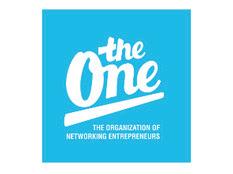










Visit us online to find out more! WWW.PENSACOLAJETS.COM Members of this community see that all citizens have worth and value but just need a little hope, guidance, knowledge, and direction. February 22 BYE February 29 Selma City Vikings Home March 7 Bayou Lacombe Cardinals Home March 14 Steel City Raptors Home March 21 Crescent City Kings New Orleans, LA March 28 Tallahassee Redskins Home April 4 Emerald Coast Scorpions Pensacola, FL April 11 Make up weekend April 18 Panhandle Crusaders Pensacola, FL April 25 Bay County Trailblazers Home May 2 Louisiana Lightning New Orleans, LA May 9 BYE May 16 Orlando Phantoms Orlando, FL May 23 Make Up Weekend Home Games at Myrtle Grove Athletic Park @ 4 PM For ticket information: www.pensacolajets.com or Greater Pensacola Jets 2019 SAFL Champions now in the APDFL


Sponsored by Shannon Wade Henley
Agent-Assisted Homes Sell for More Than Homes Sold
by Owners
In an effort to save on commission fees, many sellers go the FSBO (for sale by owner) route, thinking that selling their home on their own will be more cost efficient than hiring an agent.
Typically, FSBO is far from cost efficient.
According to the 2019 Profile of Home Buyers and Sellers from the NATIONAL ASSOCIATION OF REALTORS®, FSBO homes sold for a median of $200,000 last year—a whopping $80,000 less than agent-assisted homes, which sold for a median of $280,000.
So, what does this mean for you? If you’re thinking about going solo on your home sale as a way to save money on commissions, you might want to rethink your strategy. There’s a reason 89 percent of home sellers last year worked with an agent to sell their home; not only do they make the process easier and less stressful, but they can also get you a significantly higher price for your property. v
REAL ESTATE INSIGHT
Sponsored by Betsy
Tait
20 Questions to Ask When Buying a Condo
Considering a condominium? Take the time to research the community, talk to residents, review the condominium documents, and study other data to answer these questions:
• What’s the condition of the unit, the building, the entire complex that you’re considering?
• Are common areas well maintained?
• How many condos are for sale? (A large percentage could be a sign of problems.)
• What percentage of the units are owner-occupied? (Many lenders won’t back loans if the majority are rented.)
• How much are the condo/association fees and what do they cover?
• Does the association have adequate reserves for emergencies and renovations? (If not, you could face a special assessment.)
REAL ESTATE INSIGHT
36 March+April 2020 EC Parent Magazine

• What’s the temperament of the condo board? (Board minutes could reveal controversies.)
• Are there pending lawsuits against the association or judgments you might have to help pay?
• What does the association’s insurance cover? (You may need supplemental insurance to protect everything else.)
• How much outstanding debt does the association have?
• What percentage of the units are in arrears on their dues?
• Does the seller owe back fees or assessments that may become your responsibility when you buy?
Does
the unit come with reserved parking?
• What’s the neighborhood like? (Ask neighbors and walk the area at night and on weekends to check when residents are home.)
• Does the unit come with reserved parking?
• Is there adequate additional parking for guests?
• Will you have extra storage space for bikes, paddle boards, and the like?
• Is the association managed by a qualified professional company?
• Does management handle requests and complaints quickly?
• Do association rules limit your ability to rent the unit?
• Will restrictions prevent you from changing visible elements such as the color of the front door or your window coverings? v


on clouds in your mind’s eye and letting them float away. Any type of rest can be considered a good nap.
5. Consider Caffeine Intake. It’s okay to drink coffee or tea to help you stay alert, but try not to drink caffeine after 3 pm if you want to sleep well at night. On the other hand, if you find yourself awake at four or five in the morning, you may decide to get up and drink some coffee, knowing that you will be napping with your toddler mid-morning. Adjust your caffeine consumption to support your nap schedule. Naps reduce your sleep deficit; caffeine does not.
6. Banish Guilt. Your whole family will sleep better if you ignore other opinions and do what works for you. Infant deaths, parent accidents, and postpartum depression are all alleviated by excellent parent self-care. If you have a baby who does not sleep through the night, get creative with your sleep routines. Don’t try to force a baby who has only been alive a few months to align sleep rhythms with adults. Create a sleep schedule that’s win-win for your family and your baby.

Sources: Realtor.com, Investopedia, Bankrate.com, Kiplinger.com, Federal Housing Authority
Continued
page
EC Parent Magazine March+April 2020 37
Continued from page 17
on
38

7. Ask for Help. A sleep-deprived parent caring for a baby is risky. Babies spend a lot of time sleeping, and parents can play this tendency to their sleep-deprived advantage. Team up and work out a schedule that allows everyone to maintain adequate sleep. If one parent is sleep deprived and the other is working full-time, consider sleeping in separate beds during the week and swapping bedrooms on the weekends. Let the working parent do some weekend nighttime duties to help the stay-at-home parent catch up on sleep.
8. Accept Evolving Routines. Once you find a sleep schedule that works, milk it as long as you can. It’s possible that baby’s schedule will never become consistent, and that’s okay. Don’t hold yourself to some ideal standard that has no impact on health. The important goal is for everyone to get enough sleep. Once you have achieved that, then you can worry about how clean the house is or is not.


Once you find a sleep schedule that works, milk it as long as you can�
Continued from page 37 38 March+April 2020 • EC Parent Magazine ItsYourMagazine com

9. Take Pride in Sleeping Well. Parents may discover that no matter what their child’s age is, getting enough sleep remains challenging. Exhaustion is often glamorized and contagious. Pay attention to your own sleep needs first, and meet them consistently to model healthy sleep hygiene. Then teach kids to say no to sleepdeprivation temptations. Inoculate your family against unhealthy sleep habits—you’ll be so glad you did. v
Parents may discover that no matter what their child’s age is, getting enough sleep remains challenging.

TYPES OF NAPS
Compare nap types and try what works for you—or whatever necessity dictates.
The 10- to 20-minute Power Nap. It’s not the length of the nap that causes you to awaken refreshed; it’s your ability to totally surrender to sleep, even when the nap will be short.
The 30-minute Short Nap. Some people say this type of nap isn't as effective as longer naps, but take a short nap over no nap any weary day. Set your phone alarm so you can succumb without worrying about oversleeping.
The 90-minute Deep Sleep. Studies show that you can enter REM sleep if you can stay asleep for an hour and a half. Sleeping deeply helps you bounce back faster once you wake up.
NAME THAT NAP
Co-snoozing: If the baby is already sleeping, why not cuddle up and nap together or near each other? Do your due diligence online on the safest ways to co-sleep. Or gently lay baby down in a co-sleeper or crib in the same room.
Cat Nap: If you are alone and have 30 minutes, cover your eyes, use earplugs, recline, and grab a short rest. Some people nap better if they are alone.
After-lunch Shuteye: Bring earplugs and an eye mask to work, lay your head on your desk, and set your phone for your wake-up time.
Car Respite: Find a shady spot, park the car, crack the windows, stash your valuables, lock the doors, put back the seat, and snooze.
Sideline Siesta: Seek a spot beyond out-of-bounds players and stray balls, bring a blanket, use your purse as a pillow, put a magazine over your face, and feel the earth cradling your body.
Shotgun Recharge: Babies are not the only ones who can catch some zzzs in a moving vehicle. Bring your earplugs and sleep mask, let your spouse navigate, put your seat back, and sleep away.
Author and journalist Christina Katz loves sleep. She would count the ways but it might put her to sleep at her desk— although there is nothing wrong with that!



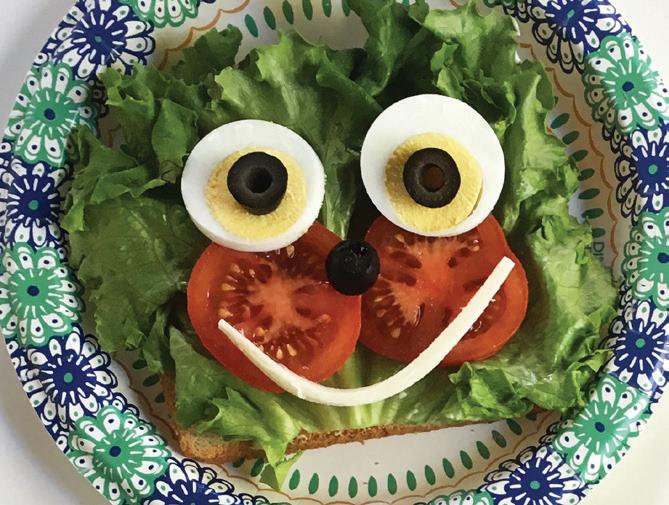

BUILDERS FAMILY
Strong Families Don’t Just Happen
Spend a little time talking to each other every day—take our Family Chatter challenge� Have some messy fun in the kitchen or at a craft table making some of our featured Snacks & Crafts. Teach your children how to organize thier toys with our Teach Your Kids Something New Learn how to help children who really don’t like to read—check out our That’s Good to Know section � Enjoy life—TOGETHER!



Visit Us Online! ItsYourMagazine.com 45
44 50 54 42 48 57
Our FamilyChatter Challenge is simple— just do your best. Here are some easy questions that will hopefully inspire your family to engage in great conversations whenever, however, you can. Enjoy!
Live, Laugh, Love, and TALK TOGETHER!
What is your dream job and are you willing to do what it takes to get it?

Where would you spend your summer if you could go anywhere?
Would you prefer to bike, hike or swim?
Do you think there should be homework?
Do you like to stay up late or wake up early? Why?
Do you want to live in your hometown forever or move somewhere new?
What is your favorite kind of car?
Do you plan on having a job in high school? Where would you apply?
What is your favorite kind of candy?
If you could take a one-day trip during spring break where would you go?
42 March+April 2020 • EC Parent Magazine ItsYourMagazine com
What is your favorite dessert?

Do you like cereal or eggs for breakfast?
What is your all-time favorite movie?
Keep the Conversation Going with Follow-up Questions:
o Interesting� What else can you tell me about that?
o Now what are you going to do?
o No way! Can you tell me more?
o Seriously? Then what happened?
o How do you feel about what happened?
o How does this make you feel?
o What’s your next step?



WHEN YOUR CHILD DOESN’T LIKE TO READ
By Katy M Clark
Again. I saw it again. Another post on social media from a friend singing the praises of her child who couldn’t stop reading: “How lucky am I?” she wrote. “My son finished Harry Potter and he’s only in second grade!”
You are lucky, I thought, damping down my jealousy. My son hates reading. He loathes it with a passion unseen since he lost a game of Candy Land to me when he was three years old. I can’t exactly post “My son hates reading!” on social media, though. He’s a teenager now, and I’ve waited years to admit publicly how much he hates reading. I felt that my son’s lack of interest in reading meant that I was a bad mother, that I had failed somehow.
However, the truth is kinder to me than I am to myself: reading is a pursuit that he is not passionate about. He can read. He doesn’t like to read. There is a difference. Ever since he was born, I tried to instill in him a love of reading. In no particular order, here are the wordnurturing, pro-book, literature-lovin’ experiences I exposed him to:
• I read in front of him. I love to read!
• I read to him daily, from birth until third grade.
• I took him to the library.
• I took him to story time at the library.
• I signed him up for the summer reading program at the library.
• I took him to the bookstore.
• I bought him books from the bookstore.
• I bought him books from the school book fairs.
• I made sure his daycare was a developmentally appropriate, NAEYC-accredited childcare center that was chock full of book nooks, story times, and language-enrichment activities.
• I signed those homework reading logs that came home every night from kindergarten through sixth grade.
• I chatted with him about books.
• I bought him a Kindle.
• I downloaded books for his Kindle.
• Did I mention I read in front of him? I love to read! Continued
on page 47 44 March+April 2020 • EC Parent Magazine ItsYourMagazine com

Cut out this page. Then cut it down the middle. He takes his half, she takes hers. Keep it simple. Don’t keep score. Just enjoy life and each other— as often as you remember!
Let’s face it, most of us could use a little jump start now and then when it comes to relationships. That’s why we’ve included this section. Simple acts of kindness are a great way to say, “I care about you.” Date nights are great, but when life gets busy, sometimes all that’s necessary are little reminders!


Challenge yourself to complete all 10 ideas in each issue. Don’t just focus on the easy ones!

Draw her a bubble bath with candles and candies.
Figure out her least favorite chore and do it for her.
Take her out to dinner somewhere new.
Wake up early and make her a special breakfast.
Ask her what her goals are for this year.
Take an interest in her hobby. Encourage her to take her time to participate in her hobby.
Buy her a new sweater.
Tell her she looks pretty, even when she is in her pajamas.
Ask her about her day.
EC Parent Magazine March+April 2020 45

Cut out this page. Then cut it down the middle. He takes his half, she takes hers. Keep it simple. Don’t keep score. Just enjoy life and each other— as often as you remember!
Let’s face it, most of us could use a little jump start now and then when it comes to relationships. That’s why we’ve included this section. Simple acts of kindness are a great way to say, “I care about you.” Date nights are great, but when life gets busy, sometimes all that’s necessary are little reminders!


Challenge yourself to complete all 10 ideas in each issue. Don’t just focus on the easy ones!

Go to his favorite type of movie with him.
Figure out his least favorite chore and do it for him.
Go for a hike.
Cook him his favorite meal.
Ask him what his goals are for this year.
Take an interest in his hobby.
Encourage him to take up a new hobby.
Buy him his favorite type of candy or treat.
Ask him about his work day.
Put a love note in his lunchbox.
46 March+April 2020 EC Parent Magazine

For years, I’ve felt bad about his lack of fervor for reading, especially during the dreaded “March Is Reading Month.” Until one day I stopped. It was the day a mom came over to pick up her child from a play date with my youngest (who loves to read, by the way). I don’t remember how the topic of my son’s lack of interest in reading came up, but she shared her thoughts.
“I hate reading, too,” she commented. “It was never social enough for me. I always wanted to be doing something else.” Here she was, a successful vice president at an international company with three lovely children, confessing that reading wasn’t for her.
It was a relief. It was the first voice I heard that defied the cacophony telling me that I must get my child to love reading. That day I allowed myself to believe, to embrace even, that my son could succeed in life even though he doesn’t like to read. Reading is not for my son. However, what is for my son is socializing with friends and family, chatting with anyone he meets, participating in classroom discussions, being a leader, playing sports, and being pretty great.
Maybe I should put that on social media. He can’t be embarrassed by such a post. Chances are he won’t even read it. v

Continued from page 44
Katy M. Clark is a writer who celebrates her imperfections as a mom at ExperiencedBadMom.com.

TOY ROTATION
By Sarah Lyons
Reduce Toy Clutter in Six Easy Steps
Toy clutter—it’s a problem all parents face. From the toddler years when blocks, push toys, and board books seem to be scattered down the hallway to the school-age years when kids collect tiny Legos, matchbox cars, and Barbie dolls, clutter remains an ongoing issue. A toy rotation is one way to fight this problem.
Step 1: Gather
In the main play area, gather all the toys to the center of the room. You are making a bigger mess at first, but this will help you get organized in the long run. “It may be best to start this process when the kids are in bed or out of the house,” says Colorado Springs, Colorado, mom Kara Thomas. The process may go quicker and smoother sans children. However, if that isn’t an option, get the kids involved and have them help bring toys to the center of the room.
Step 2: Reduce
Go through the pile you have gathered and throw away broken toys and items that have missing pieces. Take out any toys that are no longer age appropriate. Last, pick out toys that the children don’t play
with. Jill Miller, Cedar Rapids, Iowa, mom of two, says, “We purge things every year for the annual neighborhood garage sale. It also gives us a little cash boost.” If your family is not up for the work that goes into selling items, consider donating them to a local charity or passing them along to a friend.
Step 3: Sort
Once you have reduced the number of toys, you should be left with age-appropriate toys that your children enjoy. Now divide the toys into three categories: thinking toys (puzzles, board games, shape sorters), pretend play (play food, dolls, blocks), and toys that encourage gross motor play (balls, push toys, cars). When you have the items sorted, there should be three piles, one for each category.
Continued on page 51
48 March+April 2020 • EC Parent Magazine ItsYourMagazine com


Florida offers free prekindergarten for all 4-year-olds regardless of family income. Children must live in Florida and be 4-years-old on, or before, September 1 of the current year to be eligible. If their birthday falls from February 2 through September 1, you may wait to enroll your child the following year, at the age of 5.

The Early Learning Coalition of the Emerald Coast's mission is to support the success of every child and their family through quality early education and care. Research shows that children who participate in high-quality prekindergarten programs are better prepared for school and develop lifelong social and emotional skills. Apply online by visiting: www.familyservices.floridaearlylearning.com

Enroll in Florida's FREE Voluntary Prekindergarten Education Program!
1130 N. Eglin Pkwy · Shalimar, FL · 850.833.3627 · elc-ec.org
Cracker Flower
YOU’LL NEED
• 5-inch corn tortillas
• 8 Wheat Thins™ crackers (each)
• Cheddar cheese Easy Cheese
• sliced olives
DIRECTIONS
• paper plates
• optional: other small ingredients such as pickle circles, pimentos, carrot circles
• Give each person a paper plate and a corn tortilla.
• Squeeze 2 circles of cheese—one circle inside of the other.
• Arrange the crackers on top of the circles of cheese to make a flower shape (the cheese acts as glue).
• Use the cheese to squeeze a simple design on top of the crackers. Decorate the flower with olives (or other small ingredients).
St. Patty’s Rainbow Cookies
YOU’LL NEED
• 16.5 oz. Pillsbury prepared sugar cookie dough
• flour
• red, yellow, green, and blue food coloring
• white frosting
• 3 cups mini marshmallows
• mixing bowl
• waxed paper
DIRECTIONS
• plastic wrap
• rolling pin
• ruler
• sharp knife
• baking sheet
• table knife
• plate/bowl with 5" flat bottom
• optional: latex gloves
• Bring the dough to room temperature, then place the dough in the bowl. Follow the package instructions to add flour for cut-out cookies.
• Divide the dough into four equal pieces. One at a time, place a piece of dough in the bowl and knead in 8-10 drops of food coloring— one color for each piece of dough. (Wear gloves and change them between colors. Clean the bowl between colors as well.)
• Loosely wrap each piece of dough in plastic wrap and shape each piece into a 2x4-inch rectangle. Chill.
• Place a rectangle of dough on a piece of waxed paper. Cover with a second piece of waxed paper. Roll the dough into a 6x8-inch rectangle. Remove the top piece of waxed paper. Repeat, rolling the remaining colors of dough.
• Stack the rectangles of dough on top of each other, using waxed paper to position the dough. Carefully remove the waxed paper. Stack the colors in this order: blue, green, yellow, red. Chill the dough.
• Use a sharp knife to trim the edges of the stacked dough so they are even. Slice the stacked colors into ½ x 6-inch strips.
• Line the baking sheet with waxed paper. Place the strips on the baking sheet with the multi-colored edge up and shape into an arch with red on the top. Space the arches 2 inches apart.
• Place a piece of waxed paper over the strips of dough. Gently press each strip with the flat bottom of a bowl or plate until it is ¼-inch thick. Bake according to the package instructions. Cool.
• Spread frosting at each end of the arch. Press mini marshmallows into the frosting to create clouds.



50 March+April 2020 • EC Parent Magazine ItsYourMagazine com
Step 4: Divide
Divide the toys into three to four groups. Each group should have equal numbers of toys from the categories of thinking toys, pretend play, and gross motor toys. Place each group of toys into a large box and label it. Plastic tubs work well and can double as a toy box.
Step 5: Store
Once the toys are sorted and separated into three to four boxes, keep one out and put the remaining boxes in storage. Make sure you have easy access to the stored boxes so you can rotate them frequently.
Step 6: Rotate
Decide how long to keep a box out for play. Some families switch weekly, while some switch every two to three weeks, and some may switch every month or longer. Choose a time that works for your family. When each box is out, take note of what toys are most popular and which items get ignored. As you are packing up the box, remove the items that didn’t get played with and donate or sell them.
By implementing a toy rotation system, you will be able to cut down on toy clutter in your living space because three-fourths of the toys will be in storage at any given time. In addition to a tidier home, there will also be less mess for kids to clean up and a better chance for all the toys to be utilized. v
Sarah Lyons is a mother of six children and knows a lot about toy clutter. She writes from her home in suburban Kansas City.
Reduce Toy Clutter
• Participate in garage sales or consignment sales. “We sell toys they are done playing with,” says Olathe, Kansas, mom of five Deanna Brown.
• Pass them along to a friend or a family in need.
• Donate to a local charity.
• Give them to the church nursery or a preschool. Many times an area church or preschool may be in need of used toys in good condition for their classrooms.
• Take them to Grandma’s house. Now the kids will have something to play with when they visit.
• Try the Konmari method using the book The Life Changing Magic of Tidying Up: The Japanese Art of Decluttering and Organizing. “I use the Konmari method on the toys and ask, ‘Does this bring my kids joy or me joy?’ If not, then I get rid of it,” says Kassie, mom of three.
• Throw out the junk. Get rid of cheap toys from fastfood kids’ meals and carnivals. These toys rarely offer many hours of play time and often break easily.

Continued from page 48 , -
Easter Snack Mix
YOU’LL NEED
• 2 cups stick pretzels
• 2 cups plain Cheerios™ cereal
• 2 cups Chex™ cereal (any flavor)
• 1 cup honey-roasted peanuts
• 1 cup plain M&Ms™ in pastel colors
• 1 cup vanilla chips
DIRECTIONS
• 4 tablespoons pastel sprinkles
• large mixing bowl
• table spoon
• large spoon
• 2-cup microwaveable measuring cup
• microwave
• In the mixing bowl, combine pretzels, cereals, peanuts, and M&Ms.
• Place the chips in the measuring cup and microwave on high, stirring often (every 20-30 seconds) until just melted. Do not overheat.
• Drop small spoonfuls of melted chips all over the cereal mix and stir with the large spoon. Add sprinkles while the chips are still warm as you stir. Continue stirring until the cereal mix is coated. Scoop into cups and serve (see the Bunny Snack Cup craft for serving suggestion).
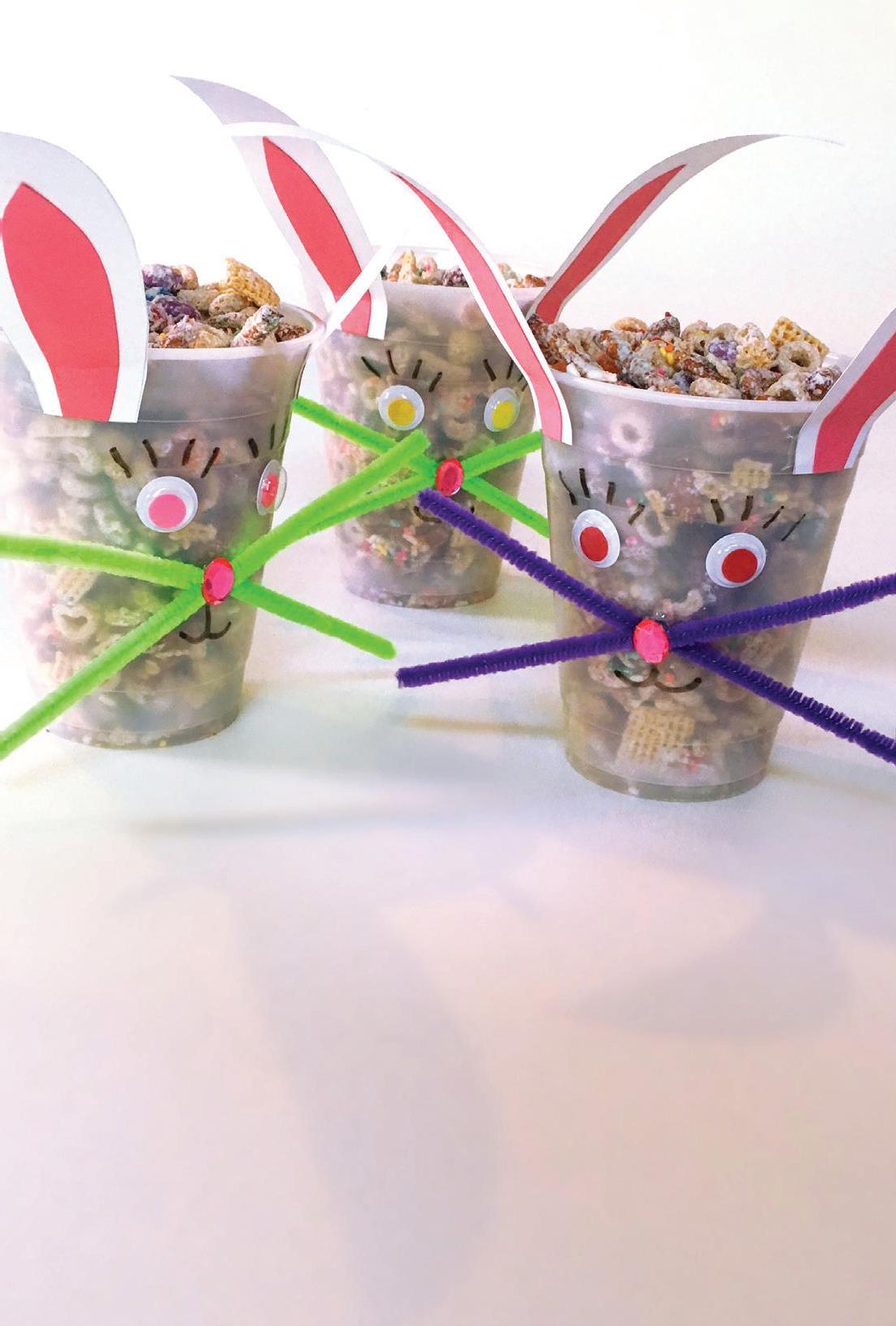
Open-“Faced” Sandwiches
YOU’LL NEED
• sliced bread
• green leaf lettuce leaves
• Ranch dressing or mayonnaise
• boiled eggs, shelled and sliced into circles
• tomatoes, sliced into circles
DIRECTIONS
• black olives, sliced
• round lunch meat
• string cheese
• plates
• knives
• tray to lay out ingredients
• Give each person a plate and a slice of bread.
• Spread dressing or mayonnaise on the bread.
• Use the ingredients on the tray to create a face on the bread: lettuce first for hair, meat for skin, egg circles and olives for eyes, olive nose, tomato mouth (or cheeks) or string cheese mouth.
These fun sandwiches are so cute, and fun to make.
In addition to being delicious they’re also a healthy snack you won’t feel guilty feeding to your children.


52 March+April 2020 • EC Parent Magazine ItsYourMagazine com




NEW PRODUCTS, USEFUL TIPS & MUCH MORE! CLICK HERE TASHA WILLIAMS
Edible Easter Centerpiece
YOU’LL NEED
• 32 oz. wide-mouthed jar with lid
• foil-wrapped chocolate bunny to fit inside the jar
• foil-wrapped chocolate eggs
• Easter grass
DIRECTIONS
• 18- and 24-inch lengths of Easter ribbon
• hot glue gun and hot glue sticks
• Tie the 18-inch length of ribbon around the neck of the chocolate bunny.
• Tie the 24-inch length of ribbon around the neck of the jar.
• Place a small handful of Easter grass in the bottom of the jar.
• Place the bunny in the jar near the back. Hot glue the foil around the bunny to the jar as needed to hold the bunny in place (where the bunny touches the jar near the top).
• Arrange chocolate eggs on the grass in front of the bunny.
• Put the lid on the jar.
These simple crafts are perfect for small children who want to spend some time at the craft table during Easter.
Bunny Snack Cup
YOU’LL NEED
• white 16 oz. plastic cup
• two 1.5 cm wiggle eyes (colored ones are fun)
• one 1.5 cm pink plastic jewel
• 12-inch chenille wire, cut in half
• hot glue gun and hot glue sticks
DIRECTIONS
• black fine-point permanent marker
• white and pink card stock
• scissors
• school glue stick
• Squeeze a drop of hot glue onto the cup for the eye and place the back of the eye on the glue. Repeat for the second eye.
• Twist the two pieces of chenille wire together at the center to create whiskers. Squeeze a drop of hot glue onto the cup one inch below the eyes where the nose will go. Press the center of the wires into the glue and hold for a few seconds until set.
• Squeeze a drop of hot glue onto the twisted center of the wires. Press the pink jewel nose onto the glue.
• Use the permanent marker to draw a mouth below the nose and whiskers.
• Out of the white card stock cut two 1.5x5-inch ear shapes. Out of the pink card stock cut two 1x3-inch ear shapes.
• Use the school glue stick to glue a pink ear shape inside each white ear shape.
• Use hot glue to attach the ears to the cup just below the rim. Optional: curl the top of each ear around a finger.


54 March+April 2020 • EC Parent Magazine ItsYourMagazine com

Voluntary Prekindergarten
EnrollinFlorida FREEVoluntary Prekindergarten
Edu ation Progra
Get ready, set a time, and read!
Florida offers free prekindergarten for all 4-year-olds regardless of family income.
Children must live in Florida and be 4 years old on or before September 1 of the current year to be eligible. If their birthday falls from February 2 through September 1, you may wait to enroll your child the following year when they are 5.


At the Early Learning Coalition of the Emerald Coast, our mission is to support the success of every child and their family through quality early education and care. Enjoy the books and the activities chosen for this edition to support your child’s early literacy skills.
Apply online by visiting: www.familyservices.floridaearlylearning.com
Re


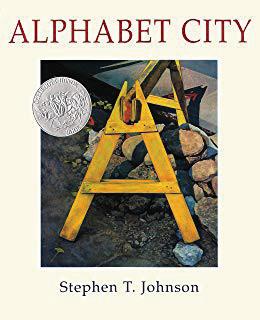

LOOK, LOOK!
By Peter Linenthal,
ISBN-10: 0525420282
Infants will love looking at such a high-contrast book. This short and exciting read can be read repeatedly to infants. Early literacy begins during infancy. Reading to infants in the earliest months sparks the parts in their brain needed for understanding language. When infants are exposed to rich language, it provides them with strong foundational skills for learning literacy.
The Early Learning Coalition of the Emerald Coast's mission is to support the success of every child and their family through quality early education and care.
ACTIVITY: When your infant is lying on their back, hold a toy above their face and slowly move the toy from side to side. This helps infants use eye muscles that will be needed for reading in the future. Touch them on their nose and make sure your infant sees your happy facial expressions. This will help develop your bond—all while helping them develop skills.
Child Care Questions?
MOO, BAA, LA LA LA!
By Sandra Boynton,
We provide free resource and referral services to local families regarding childcare.
ISBN-10: 067144901X
Parent Line: (850) 833-9333
Roaring laughter is guaranteed when you read this book with your toddler. This quirky yet rhythmic book will effortlessly capture the attention of your little mover. The rhythm of this book will entice your toddler as they enjoy hearing how words sound and connect to one another. This is the best way to help your child learn how language works.
Early Learning Coalition of the Emerald Coast 1130 N Eglin Parkway, Shalimar, FL 32579 (850)833-3627 www.elc-ec.org
ACTIVITY: Talk about the book with your toddler as they ask you questions. The best way to gain their interest is to follow what excites them about the book. Is it silly when the cow says “baaa”? What does a cow really say? What does the cow look like? What says “baa” instead? When your toddler takes over reading, let them read to you!
ALPHABET CITY
By Stephen T. Johnson,
ISBN-10: 0670856312
Look within the details of this book to find the letters within real-life materials. Preschoolers enjoy searching for the letters within their environment. They actively seek letters in their own name and the names of those closest to them. Can Ally find the letter “A” shape within the sawhorse? When they find it, trace the letter and discuss how they knew it was an “A.” What other letters can your preschooler find?
ACTIVITY: Using wooden blocks and other loose materials, work with your preschooler to create letters of their choice. Create using fun materials that your preschooler already enjoys working with and take photographs of the letters your preschooler created. Place the pictures in an area your child can see them clearly daily. This opens the door for even more discussions and opportunities for learning.
The Early Learning Coalition of the Emerald Coast's mission is to
Early Learning Coalition of the Emerald Coast
e a r c pa r t i c i pat e i n hi g h -q u a li t y p r e k in d r p r e pa r e d f o r sc hool a n d d e v elo p a l sk ill s
s
EnrollinFlorida s FREEVoluntary Prekindergarten ation Progra
1130 N EGLIN PARKWAY, SHALIMAR, FL 32579, (805) 833-3627 | WWW.ELC-EC.ORG
ItsYourMagazine com EC Parent Magazine March+April 2020 55
Glowing Easter Eggs
YOU’LL NEED
• jumbo-sized plastic Easter eggs (about 3 inches long)
• LED tea lights—one for each egg
DIRECTIONS
• small Easter stickers
• optional: permanent marker, filled goodie bag for each egg
• Decorate the large half of the eggs with stickers.
• Optional: write a number on the bottom of each egg, a different number on each one. Number goodie bags to correspond with the eggs.
• Turn on each tea light and place one in each decorated egg. Place the glowing eggs around your yard, or line the walkway to your door.
• Optional: have a nighttime Easter egg hunt. Each participant finds a glowing egg with a number on the bottom. That person receives the goodie bag with the number matching his or her egg.
A fun, new, easy and inexpensive twist on Easter eggs hunts!
Shamrock Pencil Topper
YOU’LL NEED
• glitter shamrock die cut (foam or card stock)—about 3 inches wide
• plastic gold coin (about 1 ¼-inch diameter)
• brightly decorated #2 pencil
DIRECTIONS
• 12- to 18-inch length of narrow St. Patrick’s Day ribbon
• brightly decorated #2 pencil
• hot glue gun and hot glue sticks
• Hot glue the coin to the center of the shamrock.
• Hot glue the bottom half of the shamrock to the eraser end of the pencil.
• Tie the ribbon into a bow around the pencil and the stem of the shamrock.
Have fun making these shamrock pencils. Then send them off to school with your children. These pencils will make schoolwork a bit more fun for your childen on Saint Patrick’s Day.



56 March+April 2020 • EC Parent Magazine ItsYourMagazine com

BECOMING ONE WITH NATURE
Transitioning to plant-based diets can be very complex and challenging. As a parent, it is very important to become familiar with this lifestyle if you or your children are considering becoming or are already eating as a vegetarian or vegan. I have been vegetarian for two years but lately have begun eating more vegan options when possible.
Through my process of cutting out meat, seafood, and dairy milk, I have learned a lot about the different types of recipes and substances that I need to be consuming. For instance, I now take B12 vitamins in order to compensate for the lack of B12 in my diet as a result of eliminating meat from my diet. Though there are many assumptions surrounding plant-based diets, a little research and small changes can impact your life.
There are plenty of snacks and meals beyond salads that provide the fiber, protein, and all other components necessary for proper health and nutrition. I have included quinoa, chickpeas, cauliflower, legumes, and more in my daily diet. Further, some specific brands that I love are Gardein and Morningstar, which provide alternative
meat products. These make for very convenient dinners that typically revolve around meat dishes, such as chicken or burgers.
If the environment is a key factor in your diet transition, it is also important to research the impact different products have. For example, though non-dairy milk has become popular, it took me awhile before realizing that almond and soy milk have detrimental impacts on the environment—equivalent to that of dairy milk. Good alternatives for anyone interested include oat milk, cashew milk, and coconut milk.
Luckily for me, most of my family and friends are very supportive of my decision, though I still get teased for it a lot by others. It is very important to support your children’s decisions to change their lifestyle. It makes transitioning to these types of diets, or just simply including more options into a meat diet, much easier and more welcoming. Though it can be difficult, with time and research you or your children will be able to find healthier ways to eat. v
Nia
COLLEGE FRESHMAN, AGE 18
ItsYourMagazine com EC Parent Magazine March+April 2020 57
FUN GUIDE Family
CALENDAR OF EVENTS
Making the Most of Life on the Coast! We live on a beautiful coast that has so much to offer, and we’re here to make sure you know what’s going on in your own backyard. Enjoy!
Seasonal
St. Paddy’s Day Family Party
Sun, March 15 – HarborWalk Village (12:00p.m.)
Celebrate the luck of the Irish on St. Paddy’s Day at HarborWalk Village. There will be a ton of family fun, including a performance from the Carpenter Academy of Irish Dance, crafts, a leprechaun treasure hunt, and more! Cost of registration is $5. For more information, visit www.emeraldgrande.com.

St. Patty’s Day Delight
Tues, March 17 – Baytowne Wharf (6:00p.m.)
Baytowne Wharf will be bringing in the sounds of Ireland with traditional Celtic music on St. Patrick’s Day. With Carpenter Academy of Irish Dance and live music from The Blenders, get ready to paint the town green at the Village of Baytowne Wharf! This event is free. For more information, visit www.baytownewharf.com
Easter Explosion
Sat, April 11 – Baytowne Wharf (12:00p.m.)
Bounce over to the Village of Baytowne Wharf for an Easter Explosion. Enjoy family-friendly entertainment, lawn games, face painting, and even race over an inflatable obstacle course! Last but not least, there will be a photo opportunity with the Easter Bunny himself. This event is free. For more information, visit www. baytownewharf.com.
The Arts
Pete the Cat
Mon, March 9 – Niceville (9:45a.m.)
Adventure awaits at Mattie Kelly Arts Center with their presentation of Pete the Cat. This is the perfect show for the whole family, and one that everybody is sure to love! Tickets start at $8. For more information, visit www.mattiekellyartscenter.org.
President’s Speaker Series
Fri, March 13 – Mattie Kelly Arts Center (7:30p.m.)
Dale Berra, the son of former Major League Baseball player, Yogi Berra, will take to the stage at Mattie Kelly Arts Center and discuss his unique relationship with his father, and more. Limited seating is available on a first-come, first-served basis. For more information, visit www.mattiekellyartscenter.org.
The Choir of Man
Thurs, March 26 – Mattie Kelly Arts Center (7:30p.m.)
The Choir of Man is more than just a 90-minute concert; it’s a party! Filled with amazing harmony,
incredible dance, and lively music, it’s easy to see why this show is known across the globe as the “ultimate feel-good show!” Tickets are $37. For information, visit www.mattiekellyartscenter.org.
Savor the Sound
Sat, April 4 – Niceville (2:00p.m.)
Get ready for Savor the Sound, a night of music and fun at the outdoor amphitheater at Mattie Kelly Arts Center. Headlining the event is A Brother’s Revival, an Allman Brothers tribute band, with special guests Parker Willingham, Reed Waddle, and Zydeco. Ticket prices are $10 per person or $25 per family, and proceeds benefit the Taylor Haugen Foundation. For more information, visit www.mattiekellyartscenter.org.
Disney’s High School Musical 2 Jr. Fri, April 17–Sat, April 18 – Miramar Beach
Based on the Disney Channel original movie, Emerald Coast Theatre Company presents Disney’s High School Musical 2 Jr. Troy, Gabriella, and the gang are back and ready to finish their junior year and kick off summer. This show is sure to be a crowd-pleaser! For tickets and more information, visit www.destinchamber.com.
Sound Waves Music Series at The Gulf Sat, April 18 – Fort Walton Beach (4:00p.m.)
Get ready for a night of boot-stomping fun at The Gulf on Okaloosa Island! The Sound Waves Music Series at The Gulf is hosting Billy Currington live in concert. Ticket prices are $45. For more information, visit www.destinchamber.com.
Stars of Tomorrow – An Evening with the Opera Sat, April 18 – Niceville (7:30p.m.)
NFSO presents the Stars of Tomorrow – An Evening with the Opera with performances from the winners of the 33rd annual Concerto
3 10 17 24 4 11 18 25 2 9 16 23 30 1 8 15 22 29 7 14 21 28 6 13 20 27 5 12 19 26 M S T W TH F S April 6 13 20 27 7 14 21 28 5 12 19 26 4 11 18 25 3 10 17 24 31 2 9 16 23 30 1 M S T W TH F S March
58 March+April 2020 • EC Parent Magazine ItsYourMagazine com

Competition. The Northwest Symphony Chorale will join the orchestra, performing some of the most popular and loved operas. Tickets are $25. For more information, visit www.destinchamber.com.
Dance Facets
Fri, April 24 – Niceville (7:30p.m.)
This annual dance concert hosted by Northwest Florida State College Department of Dance is back and better than ever! Enjoy many different styles of dance, ranging from ballet to contemporary, and amazing choreography from students, faculty, and guest choreographers. Tickets are $15 for adults, $10 for children. For more information, visit www.mattiekellyartscenter.org.
Runs, Walks & More
8th Annual Run for the Health of It
Sat, March 21 – Fort Walton Beach (8:00a.m.)
Meet at AJ’s Oyster Shanty on Okaloosa Island for the Run for the Health of It 5k/8k. Runners and walkers of all levels are invited to participate, even the little ones! There will be children’s activities, including a bounce house, face painting, and art stations. Participants will enjoy delicious food and beverages. Awards will be given for the top three finishers from each 10-year age group, and proceeds will benefit The White Wilson Community Foundation. For more information, visit www. fwbchamber.org.
11th Annual Navy Federal Credit Union 5K Run/Walk
Sat, April 4 – Pensacola (8:00a.m.)
Head to beautiful downtown Pensacola for this year’s 11th annual Navy Federal Credit
Union 5K. This event will benefit Achieve Escambia, which works to develop the area’s workforce and education system. In 2019, this 5K raised $20,000 for Achieve Escambia. For more information or to register, visit www.pensacolachamber.com.
Food For Thought 9th Annual Golf Tournament
Thurs, April 9 – Santa Rosa Beach (10:30a.m.)
Food For Thought is heading to the Santa Rosa Golf and Beach Club for their annual charity golf tournament. Start the day with light food and refreshments, then a shotgun start at noon. All proceeds from the event support Food For Thought’s mission to fight childhood hunger in Walton and Okaloosa counties. For more information, visit www.destinchamber. com.
Destin Chamber’s Annual Tax Relief Golf Tournament
Thurs, April 16 – Destin (12:00p.m.)
This 4-person scramble takes place at the beautiful Emerald Bay Golf Club and starts with a cookout and putting contest. There will be a shotgun start at noon. For more information, call 850-837-6241.
Chamber Classic Golf Tournament
Mon, April 27 – Pensacola (10:00a.m.)
As one of only three area tournaments to be held this year, you don’t want to miss the Chamber Classic Golf Tournament. This event takes place on the private course at beautiful Pensacola Country Club. Check-in and lunch begin at 10:00a.m., with a shotgun start at noon, and a reception and award presentation from 4:00p.m. until 5:00p.m. For more information or to register, visit www.pensacolachamber.com.
Sounds Fun
Bubbly Baytowne
Thurs, March 12 – Baytowne Wharf (5:00p.m.)
Sip and shop through the Village streets during Bubbly Baytowne. Stop in various retail merchants and enjoy a selection of premium champagnes. This event is free and for ages 21 and up only. The Village will be open to the public during this event. For more information, visit www.destinchamber.com.
World’s Greatest Baby Shower
Thurs, March 12 – Fort Walton Beach (5:30p.m.)
The Healthy Start Coalition of Okaloosa and Walton counties is hosting the World’s Greatest Baby Shower at the Emerald Coast Convention Center. This event for expectant parents, new parents, and their families will have over 50 exhibits to explore, ranging in topic from prenatal health to community resources. Admission is free. For more information, visit www.healthystartokawalton.org.
Animal Day at the Science Center
Fri, March 13 – Fort Walton Beach (11:00a.m.)
The Science Center is hosting Animal Day to kick off spring break with their animal ambassadors. Not only will there be animals, but face painting as well, so you can transform into your favorite animal! For prices and more information, visit www.fwbchamber.com.
Discover Science Saturday
Sat, March 14 – Fort Walton Beach (10:30a.m.)
The Fort Walton Beach Police Department will be at the Emerald Coast Science Center for Discover Science Saturday. The theme for the day is CSI, as attendees will learn about forensics, fingerprinting, DNA, evidence collecting,
ItsYourMagazine com EC Parent Magazine March+April 2020 59
and more, from the professionals at the FWB Police Department. The event costs $10 for adults, $8 for children. For more information, visit www.ecscience.org/events.
Planetarium Nights
Thurs, March 19 – Fort Walton Beach (5:00p.m.)
Spend the evening under the stars at the Emerald Coast Science Center’s Planetarium Nights. This special event will take you on a journey through the galaxy as you explore the Norse legends and myths hidden within the night sky. Tickets are $9 for adults, $7 for children, and purchasing your ticket in advance is highly recommended. For more information, visit www.escience.org/events.

Pinewood Auto Show
Sat, March 21 – Eglin Airforce Base (8:00a.m.)
Start your day at Eglin Airforce Base for the Pinewood Auto Show and walk among some incredible cars and planes. Concessions will be available and awards will be given to the best in each category. For prices and more information, visit www.destinchamber.com.
Snake Day with Reno’s Reptiles
Sat, March 21 – Fort Walton Beach (10:30a.m.)
Get ready for an amazingly creepy and crawly good time at the Emerald Coast Science Center. Reno’s Reptiles will be in house from 10:30a.m. until 2:30p.m., showing off a wide variety of crazy creatures, including anacondas, pythons, skinks, iguanas, a scorpion, and a 50-pound tortoise! For information, visit www.escience.com/events.
Gumbo Ya Ya Cook Off
Sat, March 21 – Pensacola (4:00p.m.)
Head to Phineas Phogg’s at Seville Quarter for a spicy and delicious evening full of tasty gumbo. Amateur and professional teams are both welcome to compete for bragging rights for the best gumbo in Pensacola. Trophies will be awarded to the top three winners. For more information, visit www.destinchamber.com.
Vettes at the Village Sat, March 28 – Baytowne Wharf (10:00a.m.)
Vettes at the Village is returning to the Village of Baytowne Wharf! Enjoy the Village while
area corvette clubs bring “America’s Sports Car” to the Events Plaza. These automotive icons will be shined to the max as they zoom into the Village streets. Be a part of the show and vote for your favorite style and model. This event is free. For more information, visit www.baytownewharf.com.
16th Annual Triple B
Sat, March 28 – Crestview (11:00a.m.)
Get ready for a day full of delicious barbecue, international foods, music, and family fun. With vendors from all over Okaloosa County, and local bands that will provide fabulous entertainment, you are in for a real treat! For information, visit www.crestviewchamber.com/tripleb.
34th Annual Sandestin Wine Festival
Thurs, April 16-Sun, April 19 – Baytowne Wharf
Head to the Village for the 34th annual Sandestin Wine Festival. Four days of unique events will open up a wide range of experiences, from attending wine dinners with celebrity chefs to taking part in wine tastings that showcase hundreds of wines. This event is perfect for wine novices and professionals alike. For more information, visit www.baytownewharf.com.
Bubbly Baytowne
Thurs, April 23 – Baytowne Wharf (5:00p.m.)
Sip and shop through the Village streets during Bubbly Baytowne. Stop in various retail merchants and enjoy a selection of premium champagnes. This event is free and for ages 21 and up only. The Village will be open to the public during this event. For more information, visit www.destinchamber.com.
Hogfest
Sat, April 25 – Pensacola (6:30p.m.)
Hogfest in Pensacola is a huge party with a bigger cause! Each ticket to Hogfest includes admission to the event, a chance to win a 2019 Harley Davidson Fatboy, bottomless beer and wine garden, delicious food, live music, raffles, and more! Proceeds will benefit local charities, such as Pathways for Change, ECARE, and NE Pensacola Sertoma. For tickets and more information, visit www.northeastsertoma.com.
Reoccurring Local
Poetry & Music Jam
Every second Tuesday of each month – Crestview (6:00p.m.)
Sunday Cinema
Every Sunday – Baytowne Wharf (7:15p.m.)
Grab a lawn chair or a blanket and head to the Events Plaza Lawn at Baytowne Wharf to enjoy a movie. This event is free. For information and movie listings, visit www.baytownewharf.com.
Table Tennis
Every Monday, Wednesday, and Friday – Destin (9:00a.m.)
Head to the Destin Community Center for a spir-
ited table tennis match. This competition lasts from 9:00a.m. until 12:00p.m., and the paddles and balls are provided. This event is $3 for nonresidents and $2 for Destin residents. For more information, visit www.destinchamber.com.
Morning Tai Chi
Every Monday – Destin (9:00a.m.)
The Destin Library is hosting a morning Tai Chi class with certified health instructor Barbara Rezmer. The class is free, but donations are appreciated. Registration is not required. For more information, call 850-837-8572.
Monday Hydroflight Shows
Every Monday – Baytowne Wharf (6:30p.m.)
Enjoy shows from fly-board extraordinaire Ben Merrell over the lagoon! Watch as he soars to the sky and makes waves at Baytowne Wharf. For more information and show times, visit www.baytownewharf.com.
Boomin’ Tuesdays
Every Tuesday – Baytowne Wharf (6:00p.m.)
Enjoy lawn games and inflatables in the Events Plaza, and then watch as Baytowne lights up the sky with a breathtaking fireworks show over the Lagoon at 8:30p.m. This event is free. For more information, visit www.baytownewharf.com.
Poetry & Music Jam
Every second Tuesday of each month – Crestview (6:00p.m.)
Poets and musicians are invited to bring their work and instruments to a free-form open-mic poetry reading and jam session. For more information, call 850-682-4432.
Wednesday Night Concert Series
Every Wednesday – Baytowne Wharf (7:00p.m.)
The Wednesday Night Concert Series is back at Baytowne! Enjoy the great weather and live entertainment. The concert series features local and regional talent on the Events Plaza Stage. For more information, visit www.baytownewharf.com.
Magical Thursday
Every Thursday – Baytowne Wharf (7:00p.m.)
Watch as featured pirate Captain Davy takes you on an adventure with two magic shows on stage. For show times and more information, visit www.baytownewharf.com.
Farmers’ Market at Grand Boulevard
Every Saturday – Miramar Beach (9:00a.m.)
Start your Saturday at Grand Boulevard Farmers’ Market. There will be fresh-from-the-farm produce, local seafood, homemade dips and salsas, organic juices, homemade soaps, and more! There will even be organic pet treats for your furry friends!. For more information, visit www. destinchamber.com.
60 March+April 2020 • EC Parent Magazine ItsYourMagazine com

St. Jude patient Keeton, blood cancer pictured with his mom
St. Jude patient Keeton, blood cancer pictured with his mom
Keeton’s family didn’t give up. We won’t either.
Keeton’s family didn’t give up. We won’t either.
When Keeton was found to have blood cancer, his family was referred to St. Jude for treatment, where he’s undergoing two-and-a-half years of chemotherapy. “St. Jude means everything to me,” said Keeton’s mom. “They’re saving my baby’s life.” Treatments invented at St. Jude have helped push the overall childhood cancer survival rate from 20% to more than 80% since it first opened more than 50 years ago. We won’t stop until no child dies from cancer.
When Keeton was found to have blood cancer, his family was referred to St. Jude for treatment, where he’s undergoing two-and-a-half years of chemotherapy. “St. Jude means everything to me,” said Keeton’s mom. “They’re saving my baby’s life.” Treatments invented at St. Jude have helped push the overall childhood cancer survival rate from 20% to more than 80% since it first opened more than 50 years ago. We won’t stop until no child dies from cancer.
more at stjude.org
©2019 ALSAC / St. Jude Children’s Research Hospital (BAM773)
Learn
©2019 ALSAC / St. Jude Children’s Research Hospital (BAM773) Learn more at stjude
.org











ARBOR BARBER TREES, LLC SERVING WALTON, BAY, ESCAMBIA AND OKALOOSA COUNTIES Visit us on Facebook or online at www.abtfl.com CALL THE ARBOR BARBER | (850) 835-3355 Schedule Your FREE Consultation Today SPECIALIZING IN Tree Removal, Treatment, Maintenance, and Pruning WE NOW OFFER Landscape & Tree Service 20+ YEARS experience! 24/7 Emergency Services Available LOCAL , Family Owned & Operated TM FULLY LICENSED AND INSURED





























































 By Cheryl Maguire
By Cheryl Maguire


















































































































































